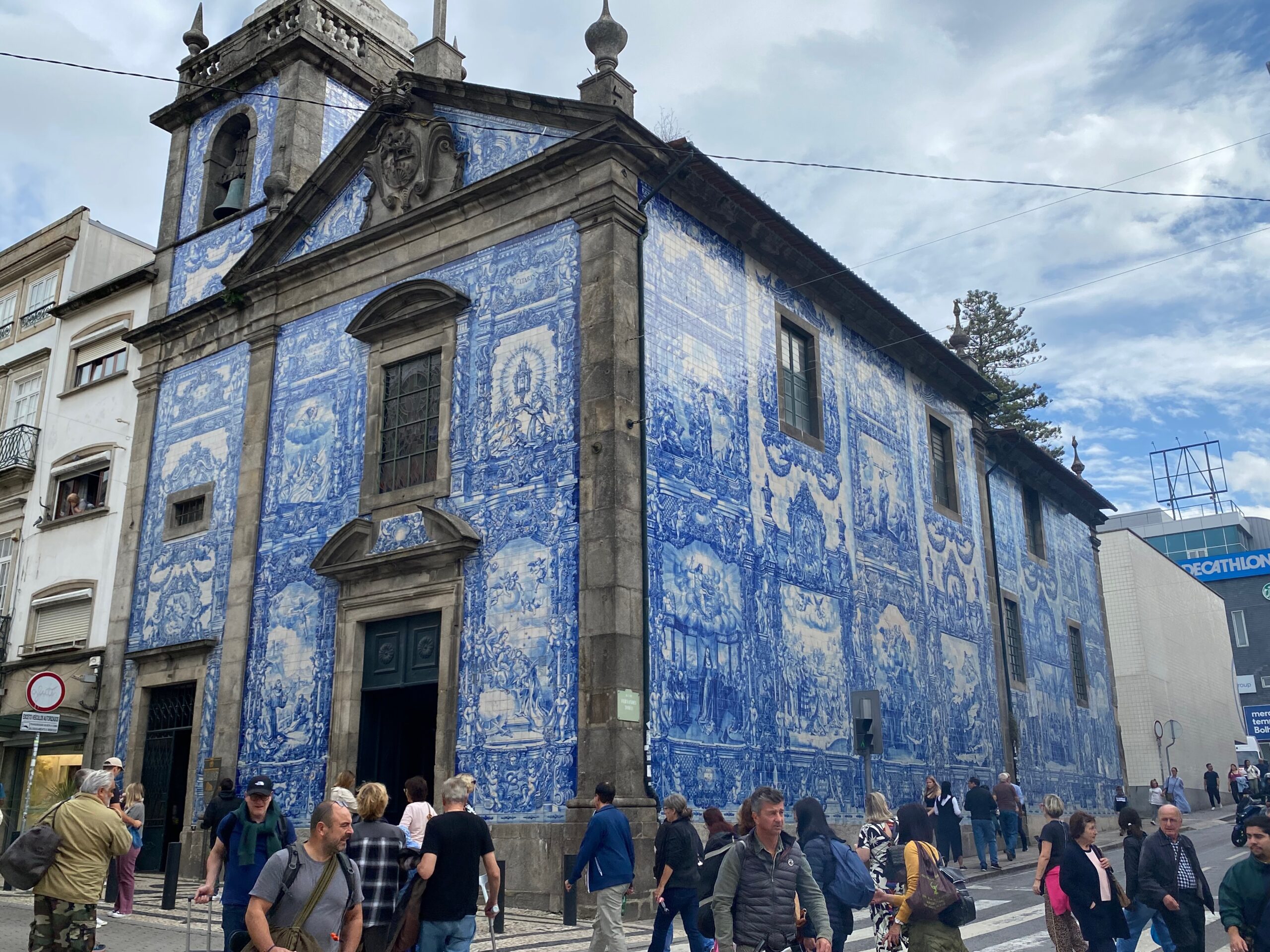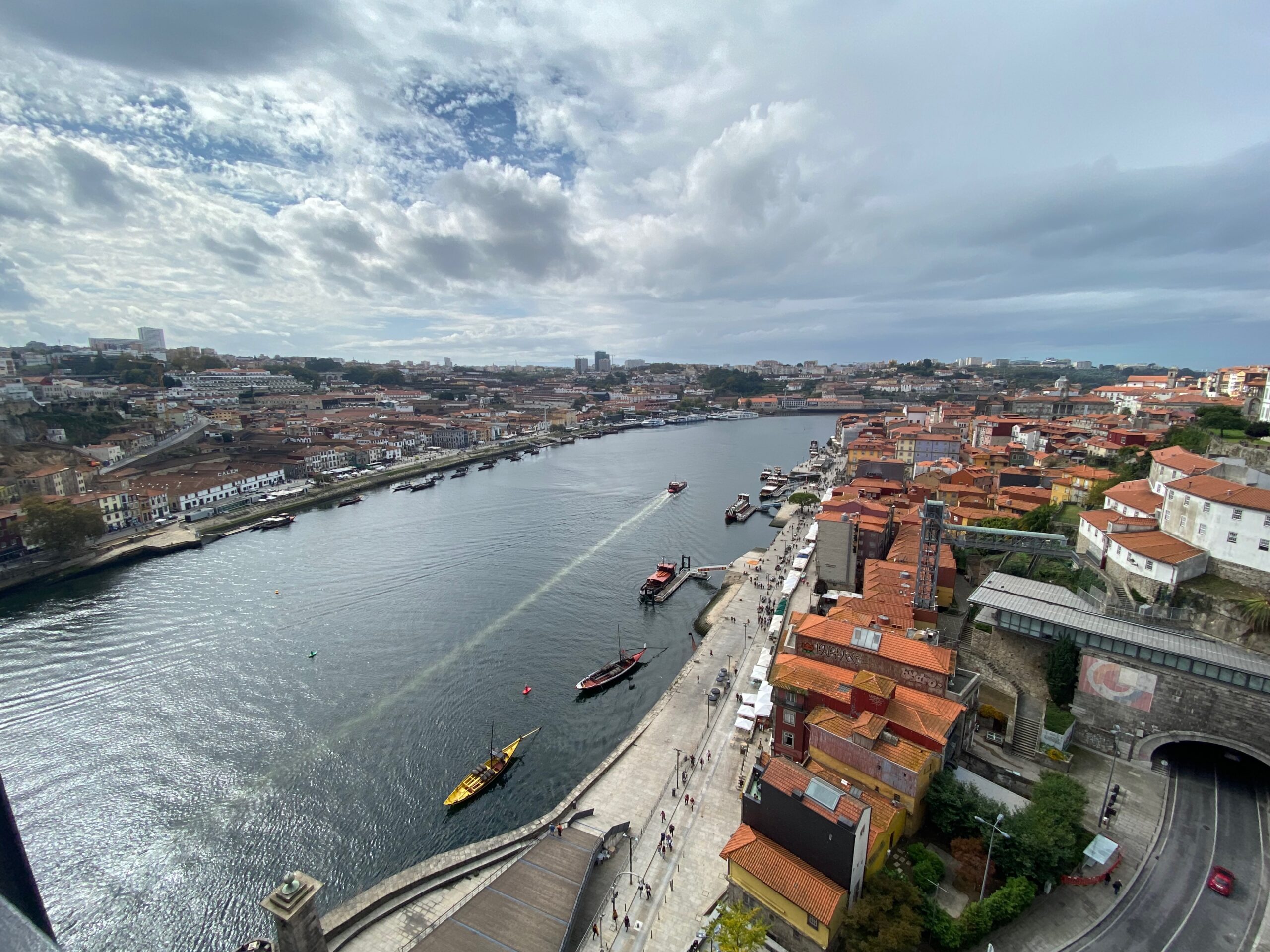
On our last night in Prague, I was on work calls and wrapping up emails until close to midnight, and David was working until about 1:30am. Our alarms were set for 3:30am for our flight to Porto. We both passed out on the airplanes and arrived in Porto around noon.
I had booked a walking tour of the city for 3pm, so with some time to kill after checking in to our hotel (which actually turned out to be an apartment), we ate some lunch - a Francesinha, which is a huge sandwich with 3 kinds of Portuguese meat, all covered in a special sauce. Delicious! After lunch, we wandered past a lovely view point of the Duoro River and then went into the Church Venerável Ordem Terceira de São Francisco. They had a museum, (creepy) catacombs, a private church (a smaller one used by wealthy families and the main cathedral, which was spectacularly filled with gold-covered wooden carvings.

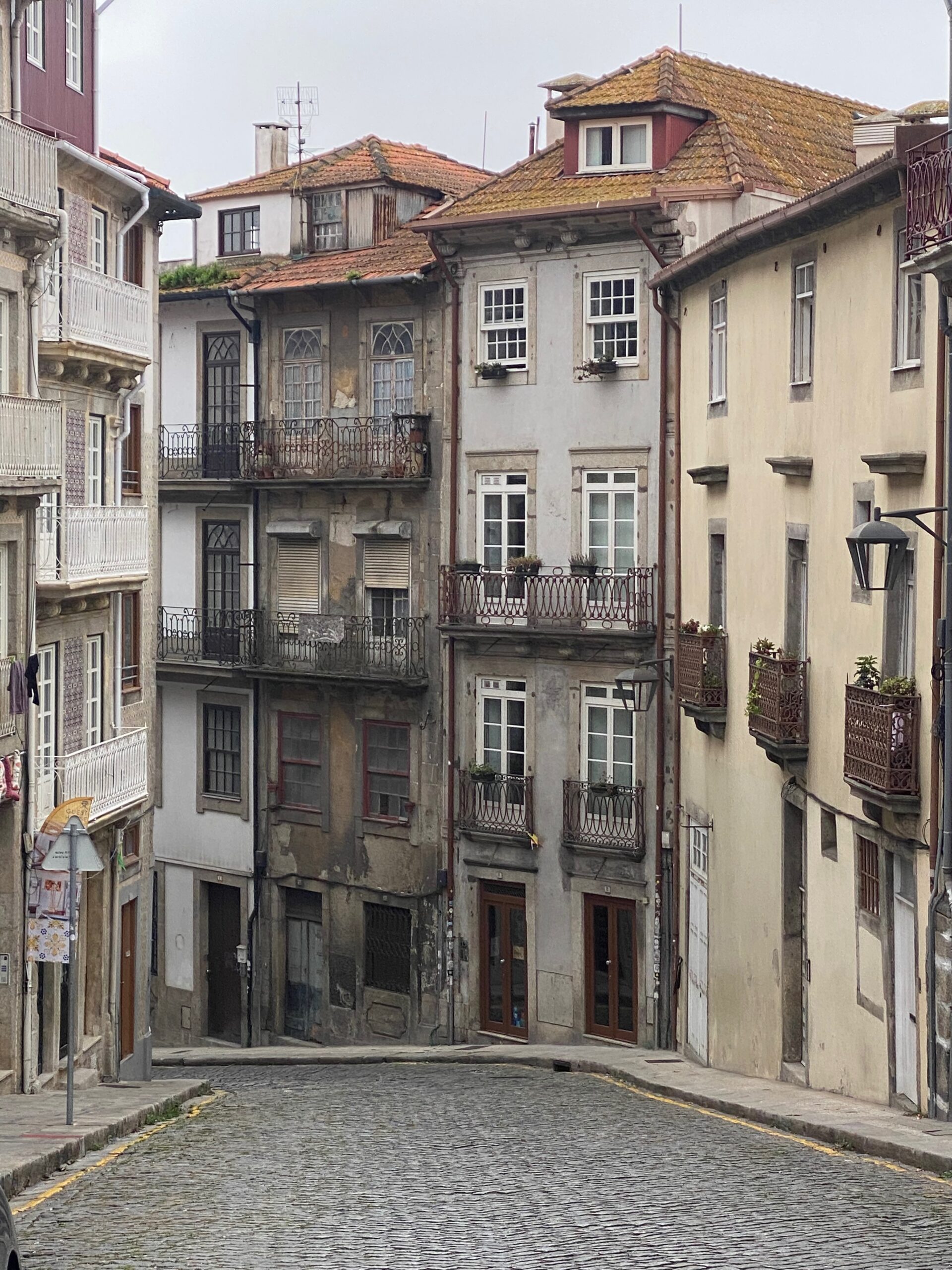
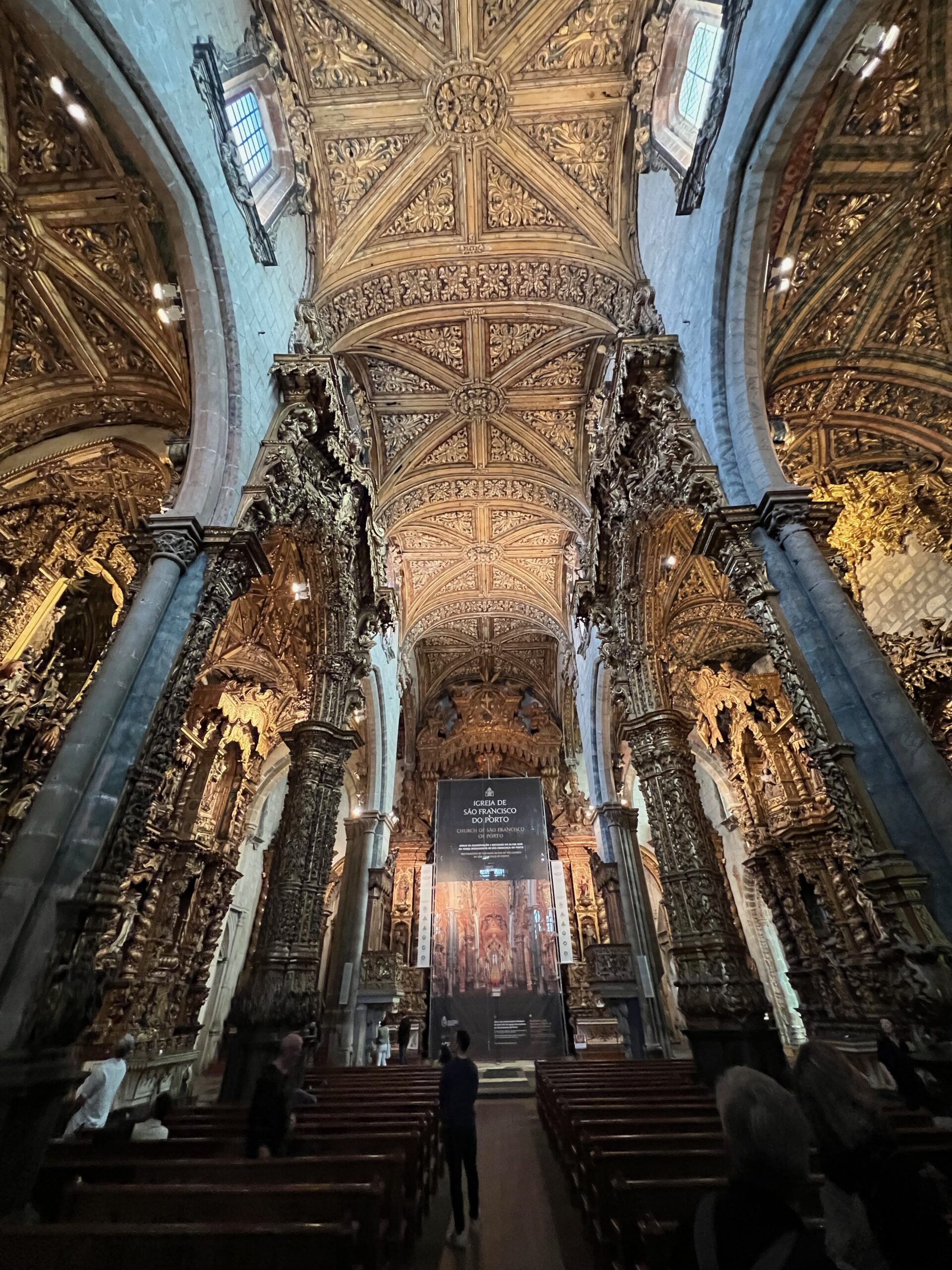


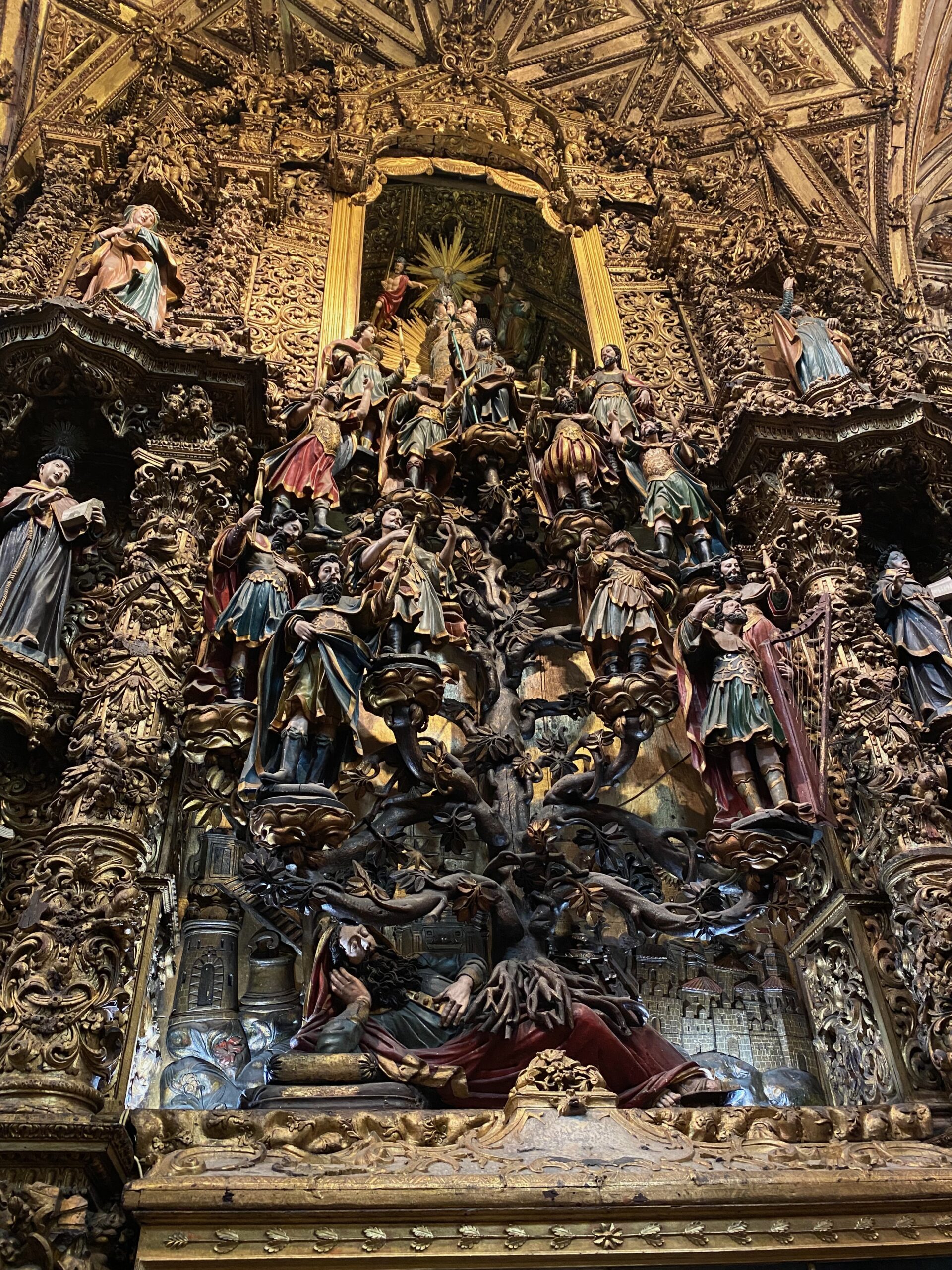
On our walking tour, we passed by most of the main tourist spots in the city, and Diana, our tour guide provided lots of detail regarding the historical and social context. Not only was this our first time being in Portugal, but David and I both realized how little we knew of Portuguese history. A fair amount of our ignorance, we think, is due to the fact that Portugal was essentially closed off from the world during its years under the dictator Salazar. Diana pointed out the statue of Justice outside the court house. Unlike her common portrayal, she is not blindfolded and is not actively holding out her scales and sword.
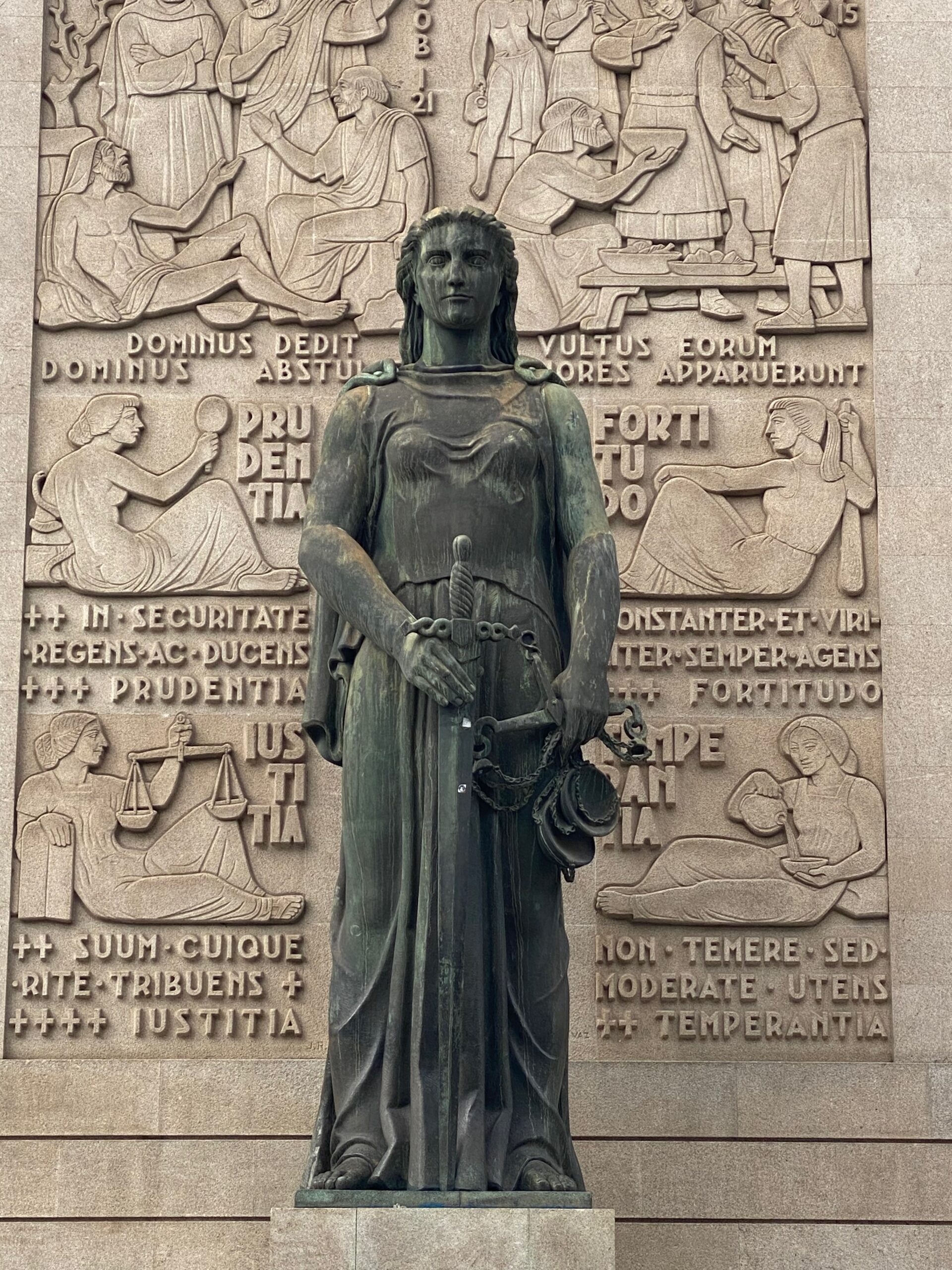
Our tour ended at a cathedral, so David and I decided to visit inside where there were some excellent examples of the azulejos (blue tiles common to Portugal). We learned on the tour that these tiles actually came from the time when Muslims occupied the region and were used for insulation and also (religious) education for the illiterate general populace.
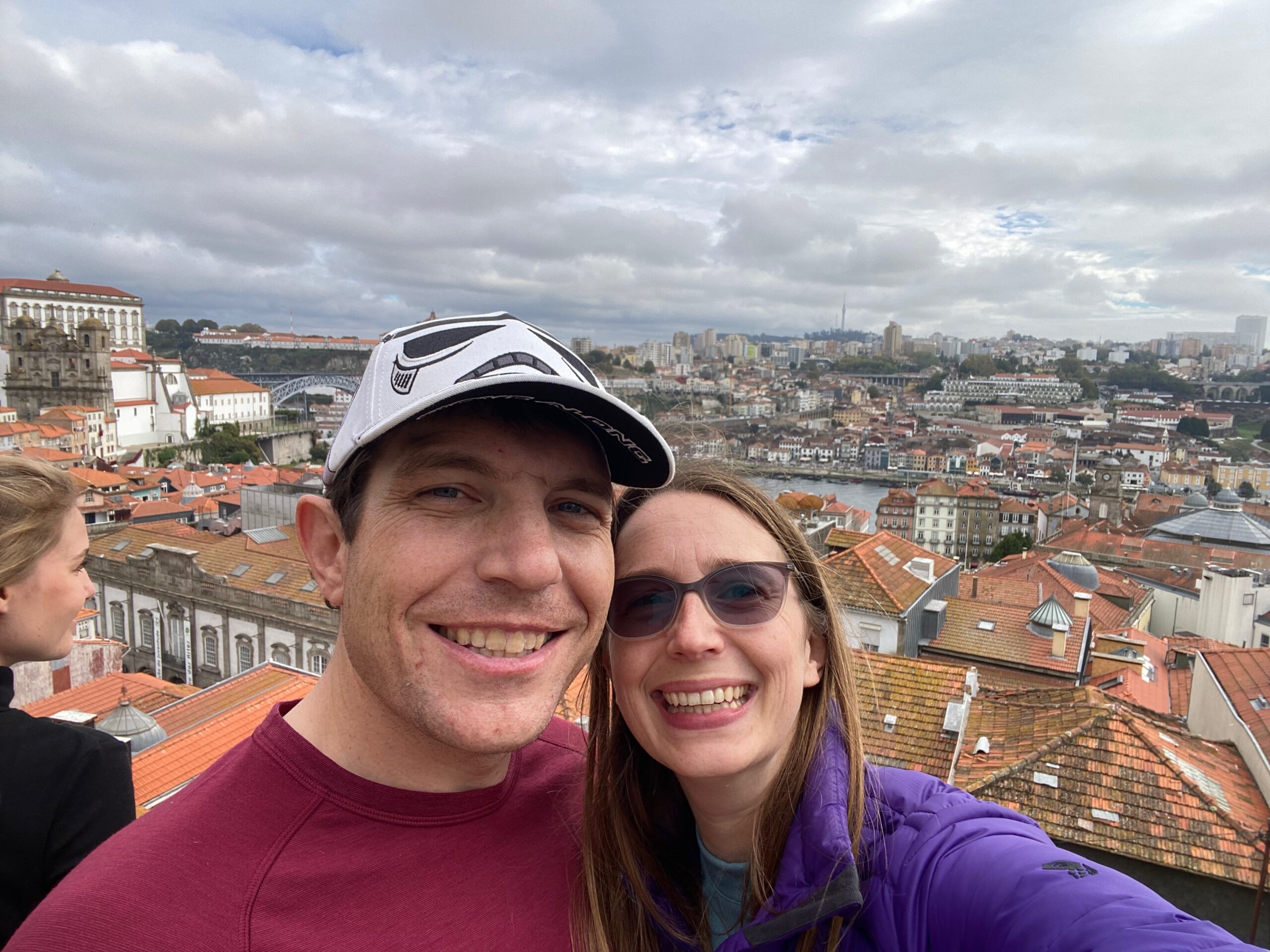
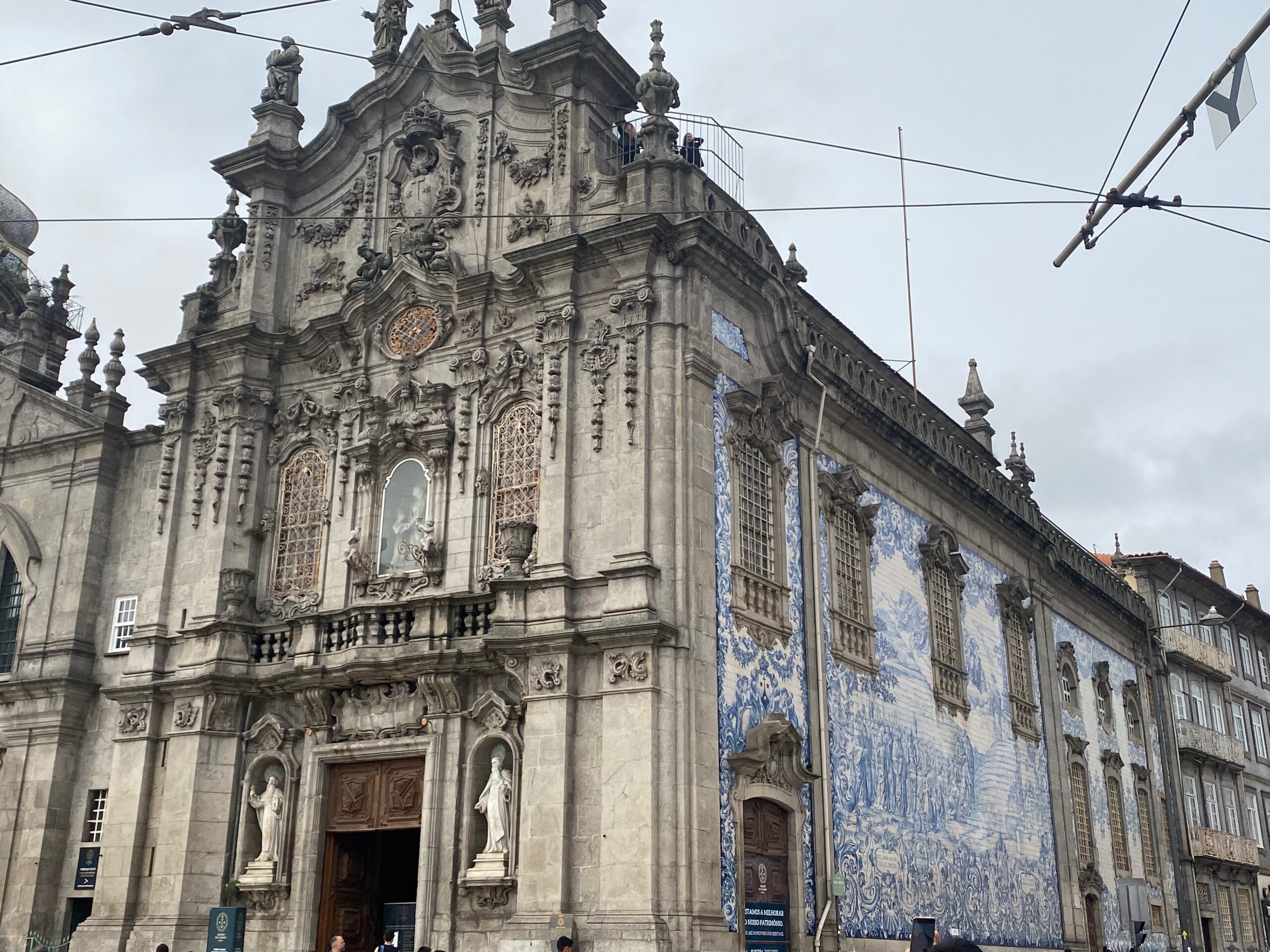
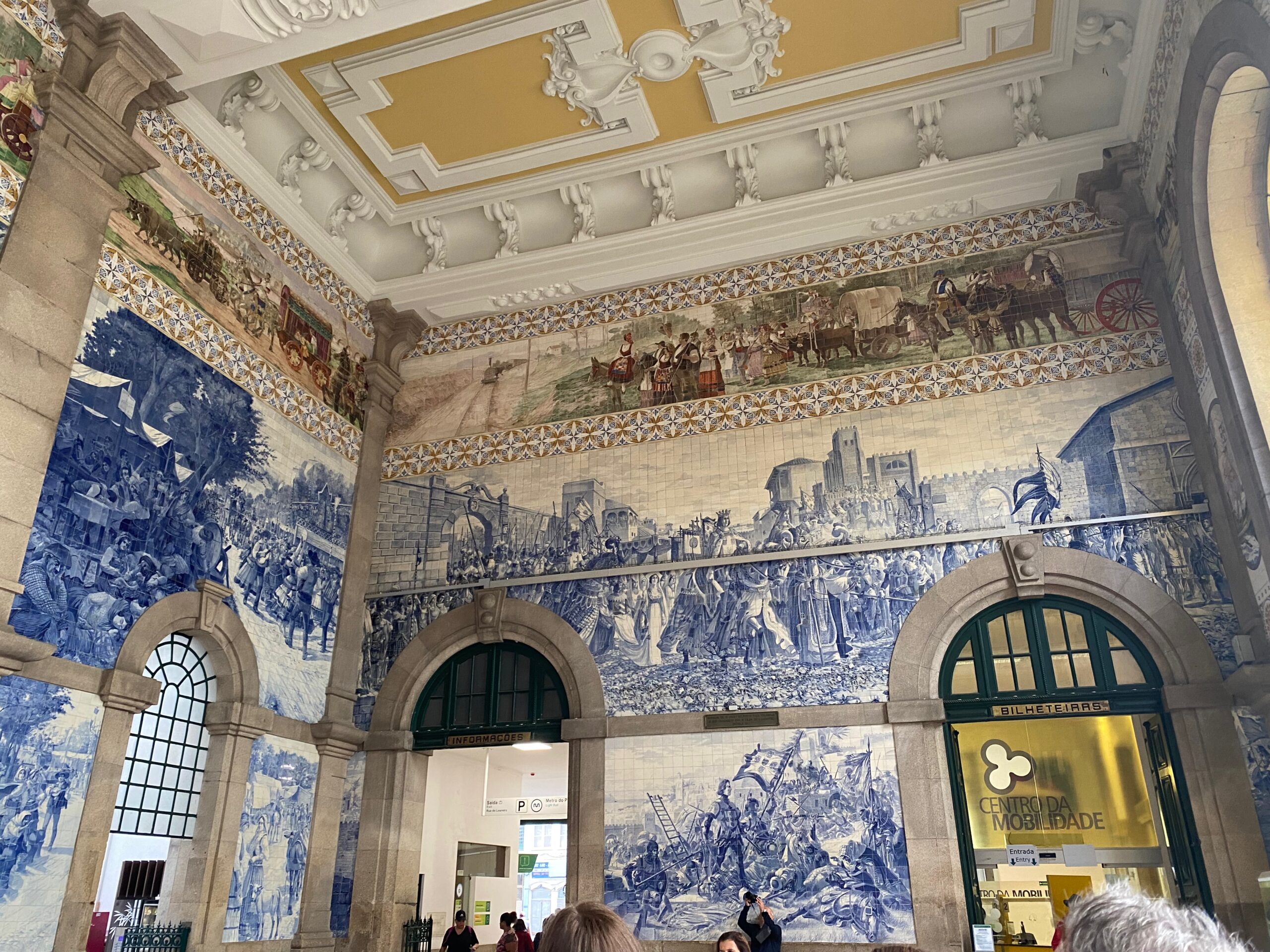
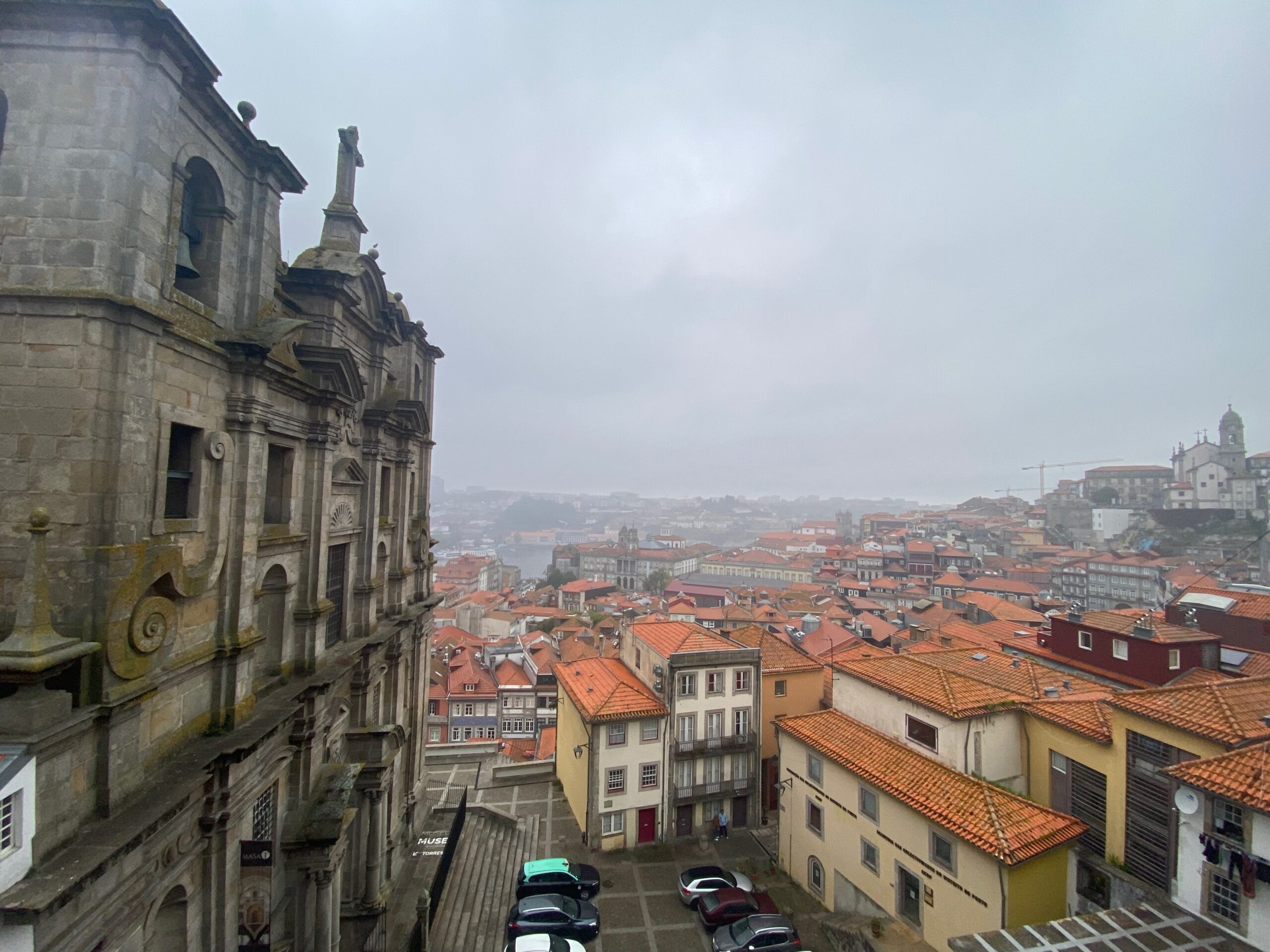

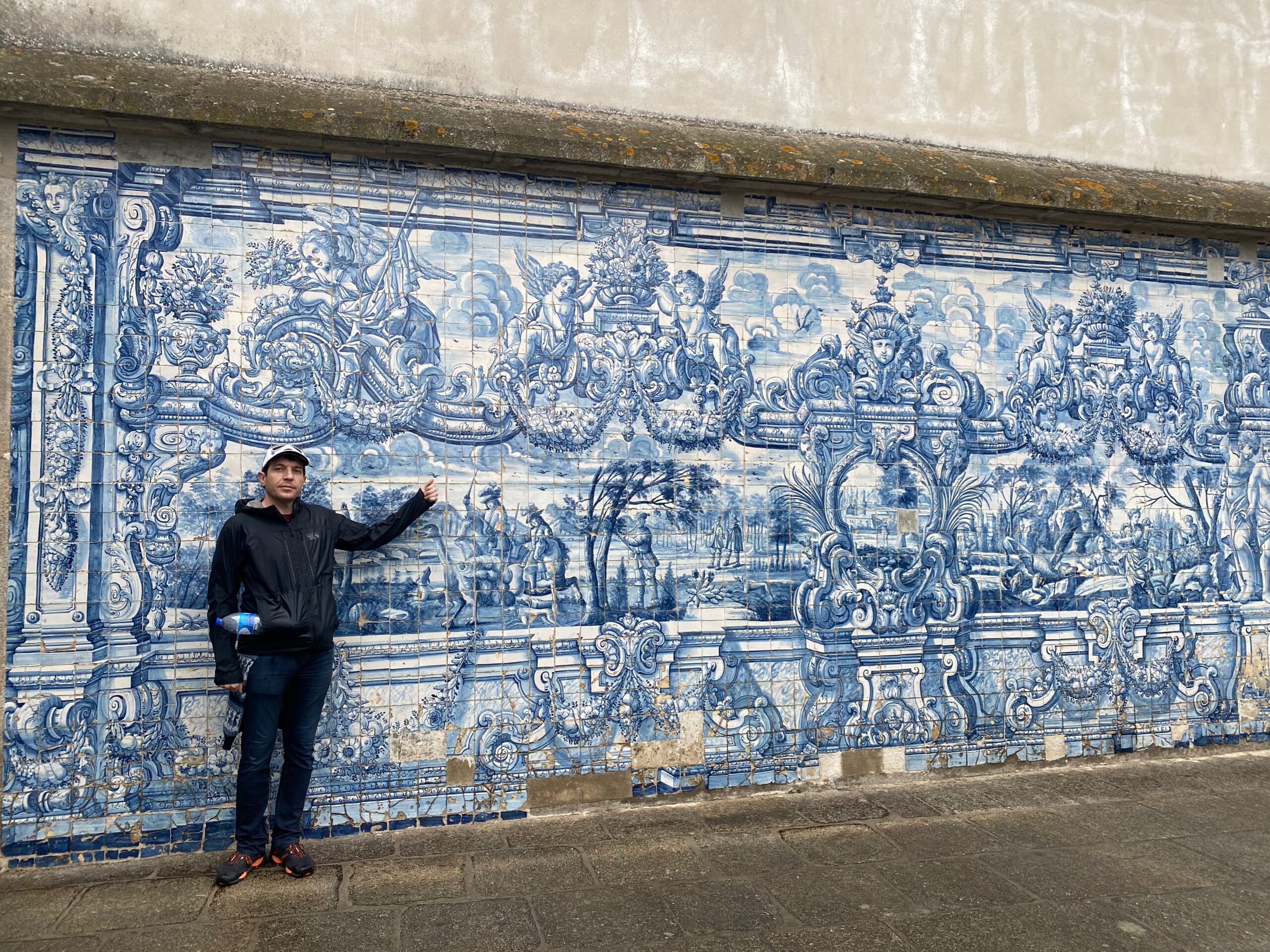
We were both pretty tired after 3 hours of walking around the city, so we stopped for an early dinner on the way back to our hotel. David immediately fell asleep and slept for about 16 hours, and I stayed awake for a couple hours reading before falling asleep myself.
After a lazy morning and a delicious tapas lunch, where we sampled the local cocktail, a Porto Tonico (white or rose port wine and tonic), we headed towards the Duoro River, through the Ribera neighbourhood, and over the Louis I bridge to Gaia where there are lots of local port wineries.
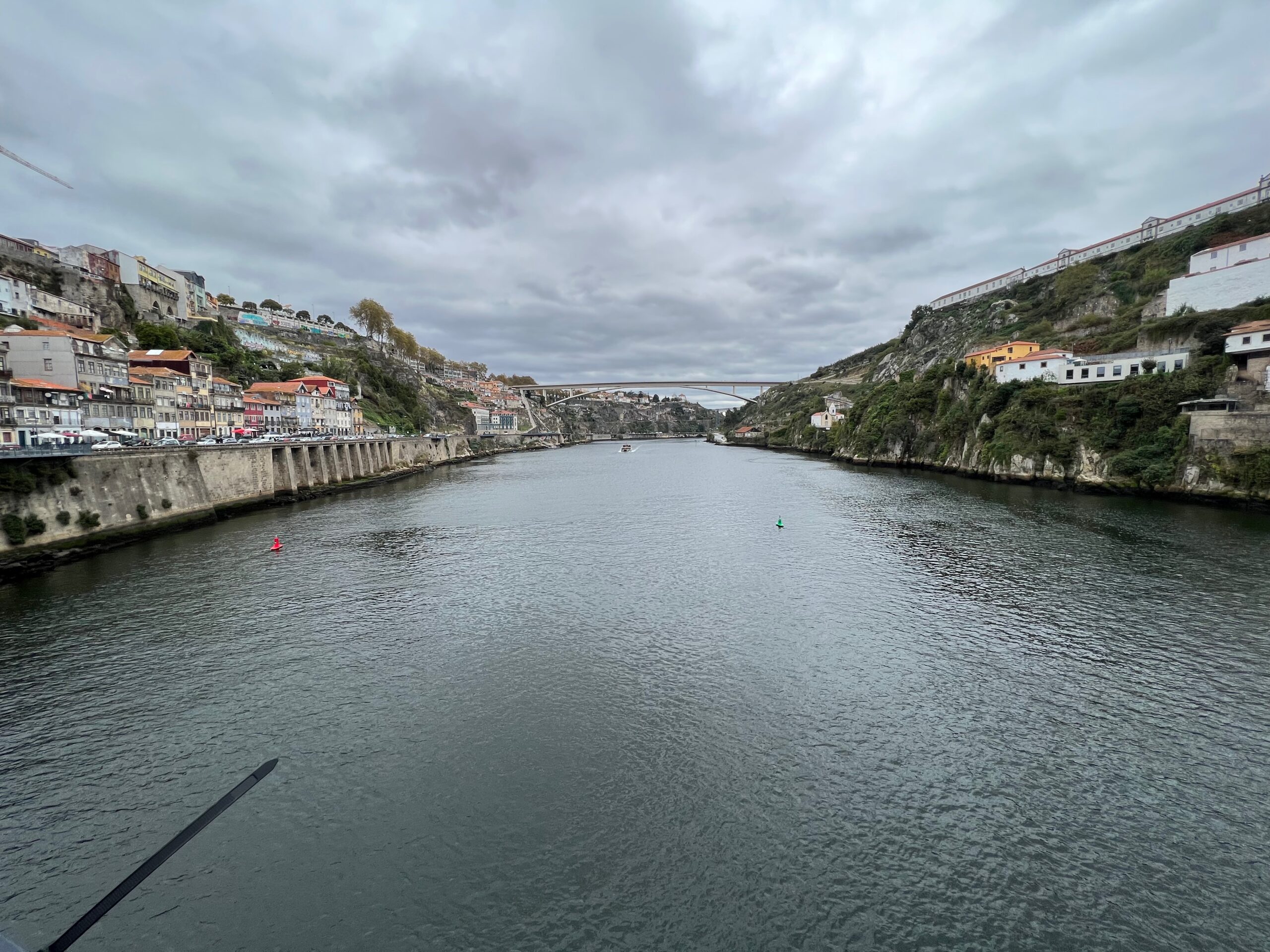
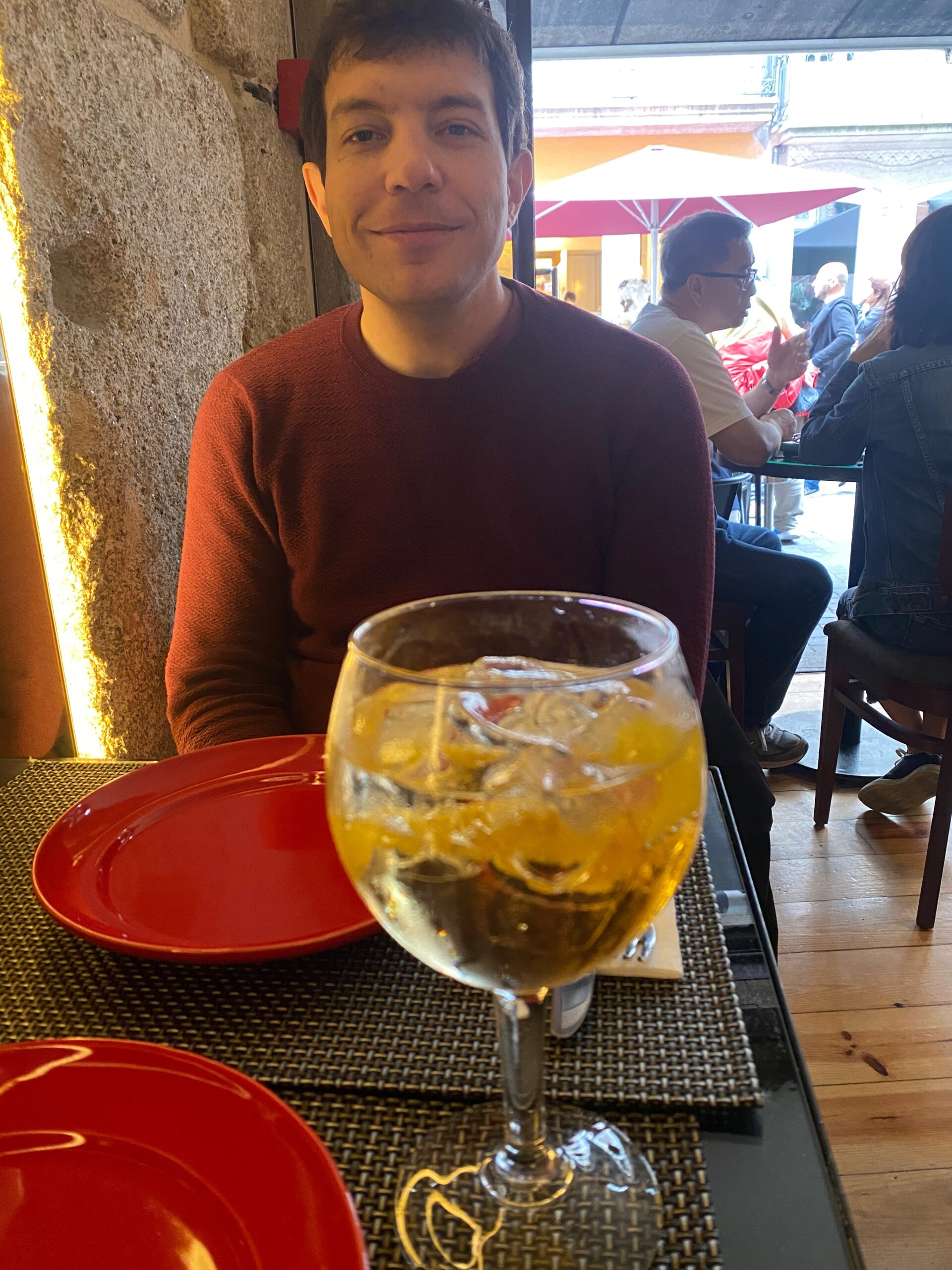
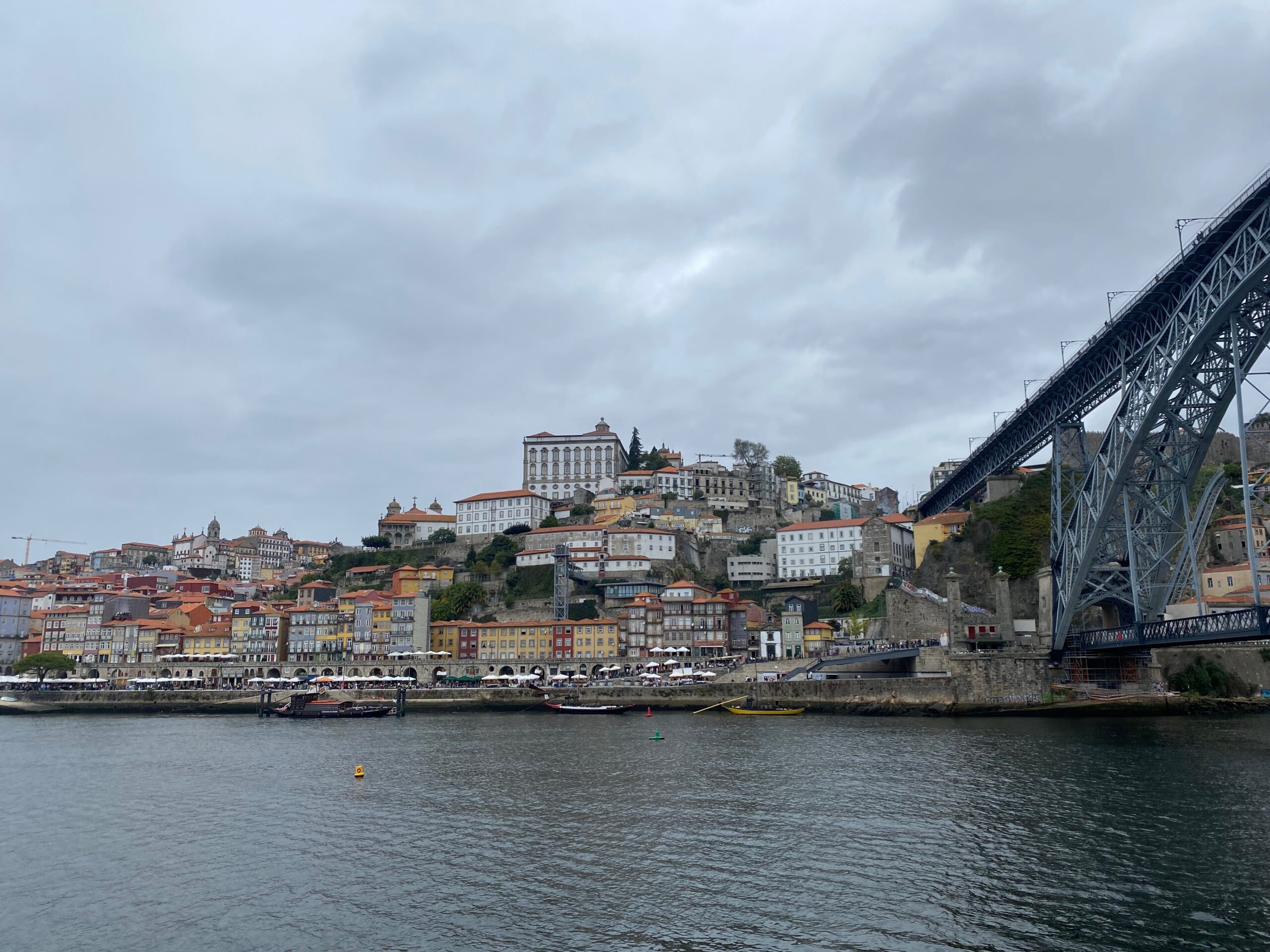
We did cellar tours through both Calem and Burmester where we learned about the history, making, and storing of port wine.
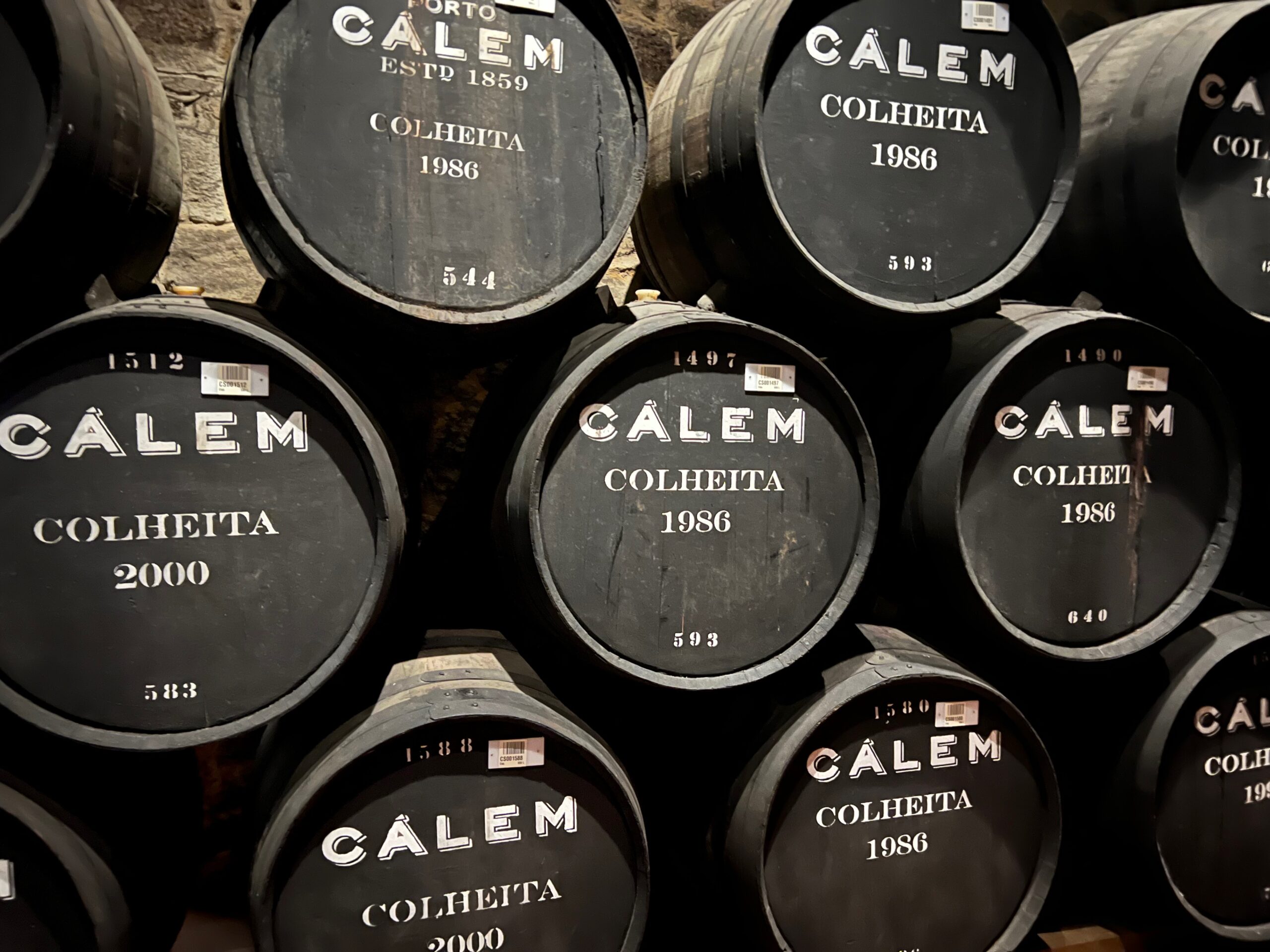
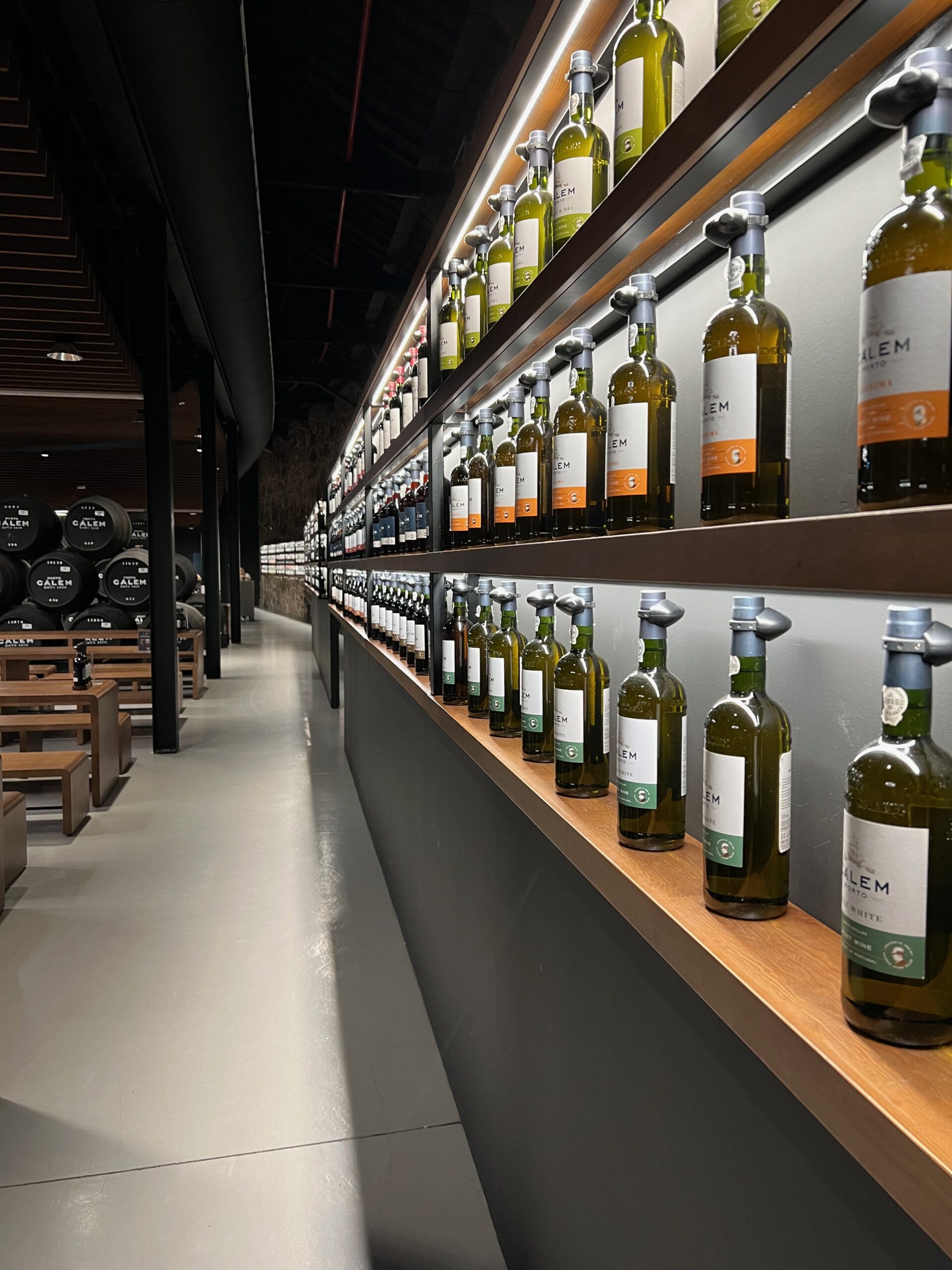

In the middle of the day, I decided that I wanted to try to see some Fado for the evening, which is a traditional type of Portuguese music where a Fadista (singer) is accompanied by someone playing a special Portuguese 12-string guitar. We found a Fado restaurant in the Gaia neighborhood that had space. With a few hours left in the day before our reservations, we decided to take a boat tour down the river, to see the famous 6 bridges of Porto. Apparently we can't be off a boat for that long!
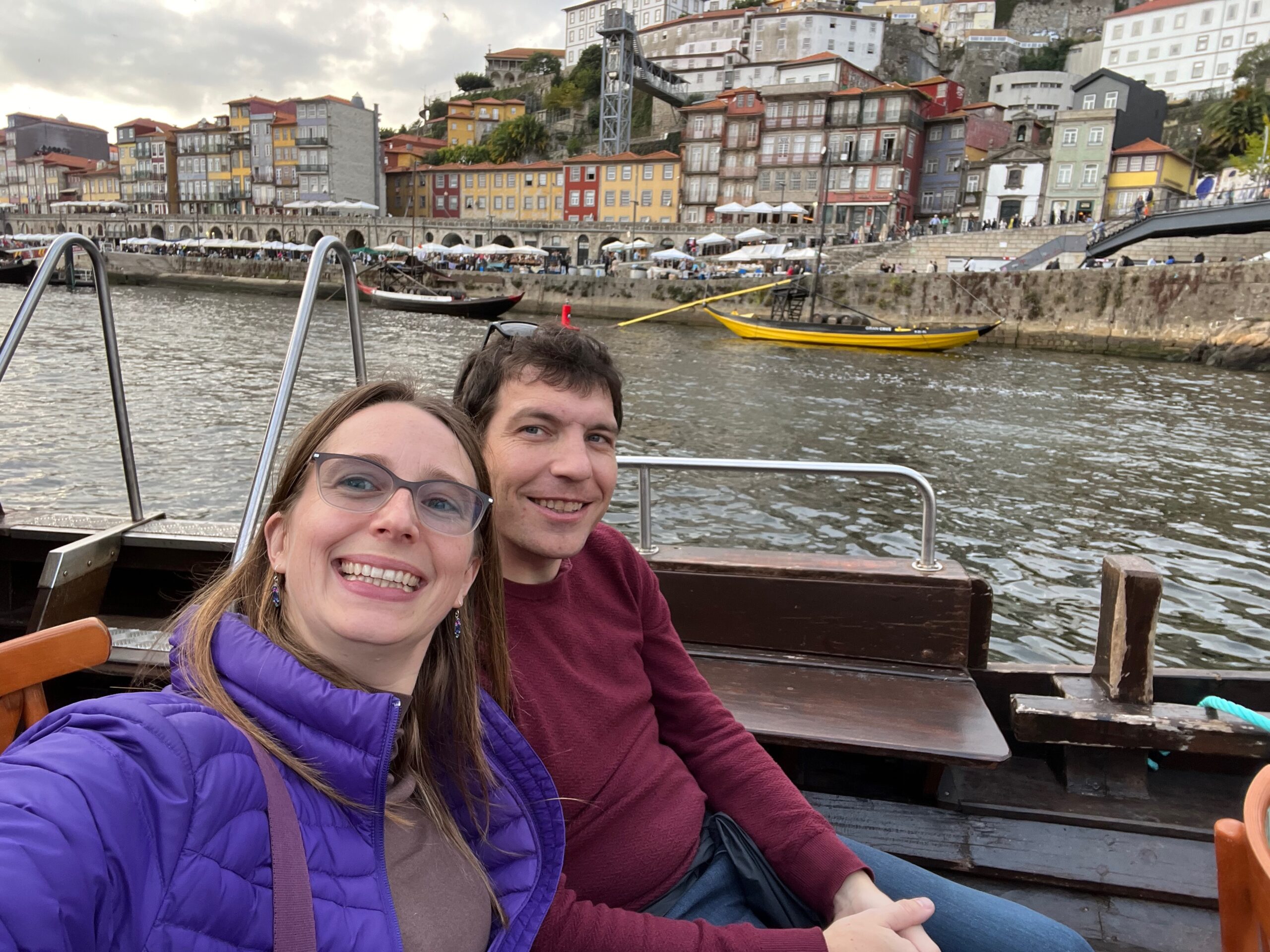
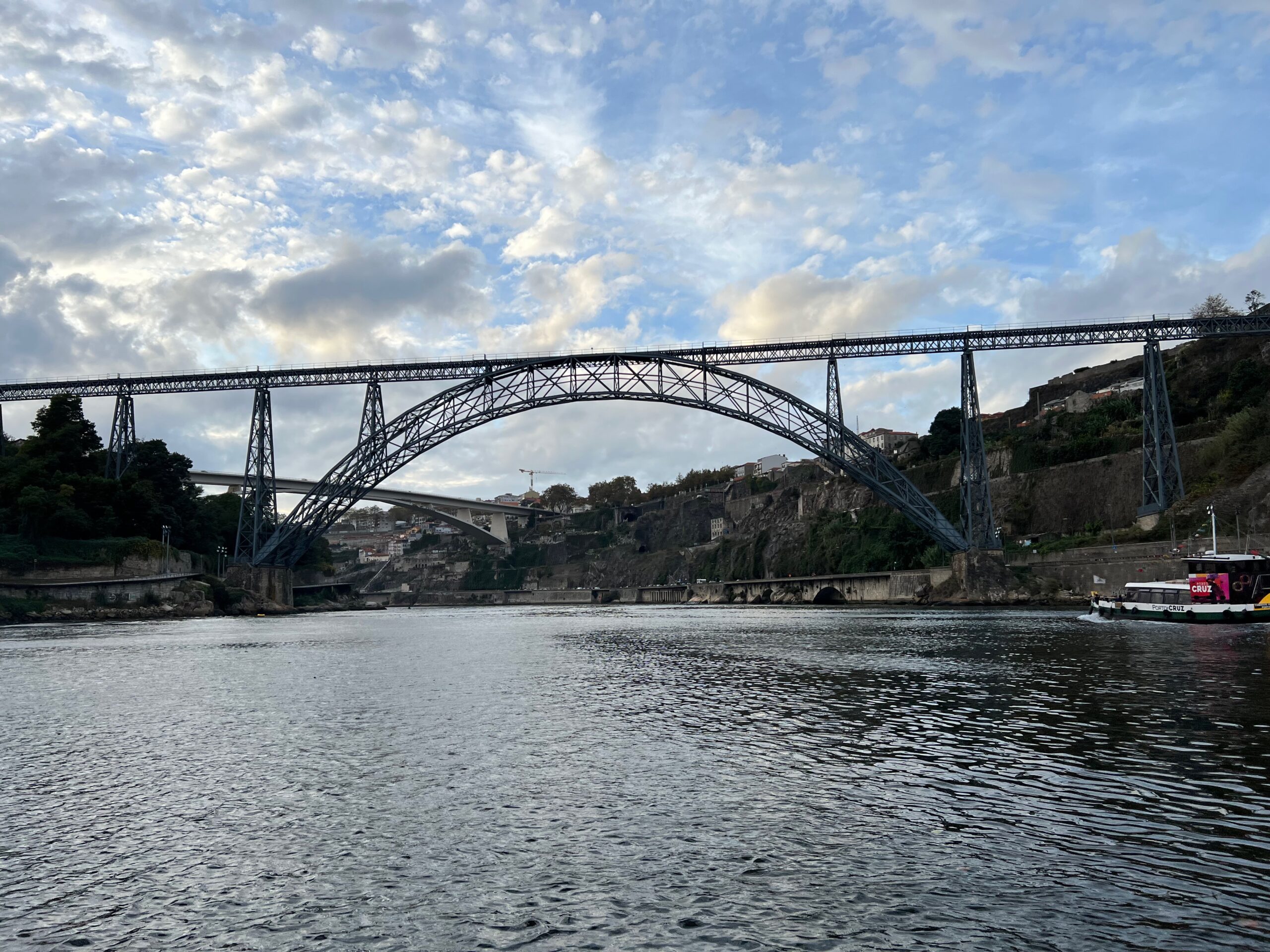
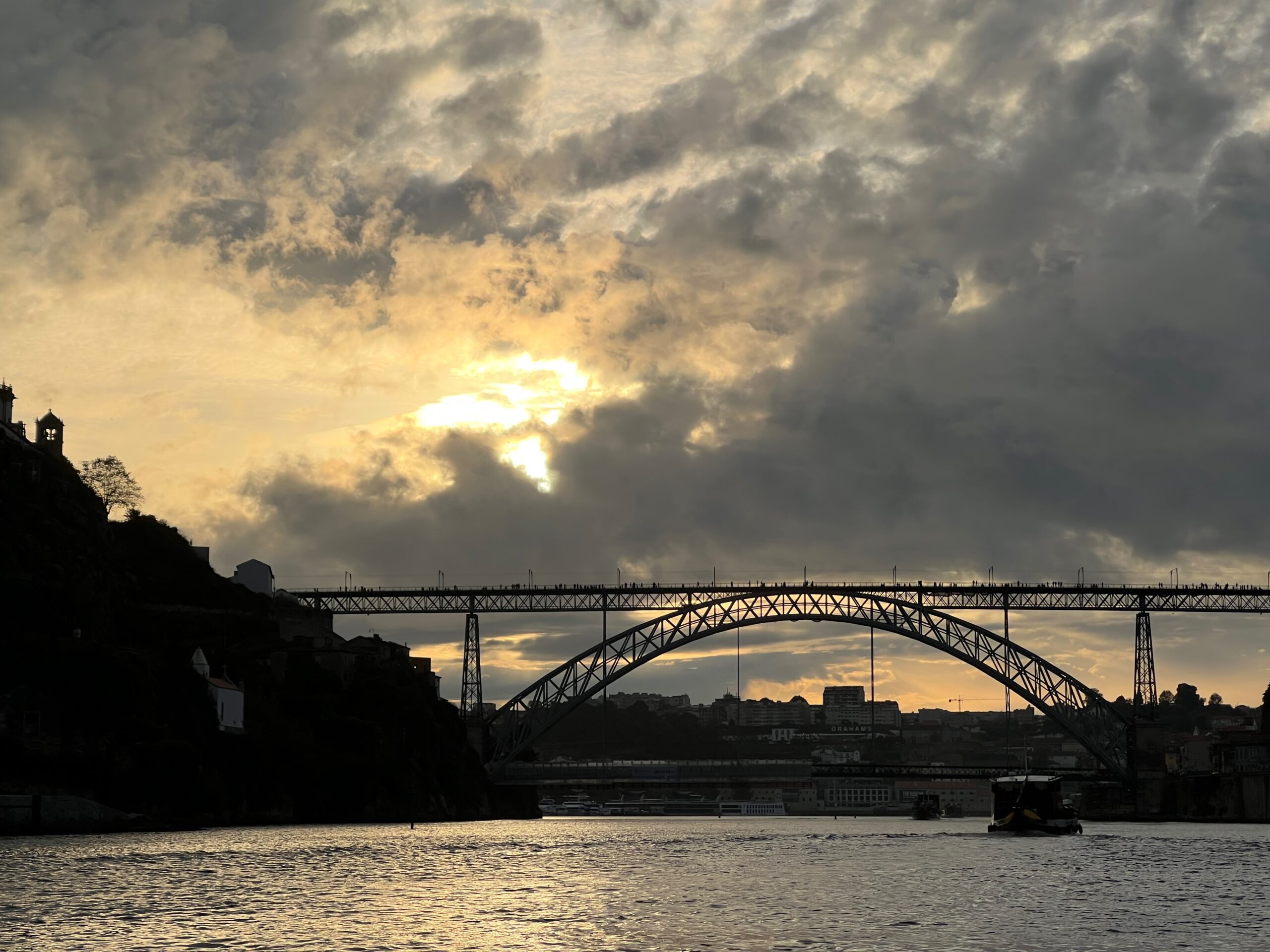
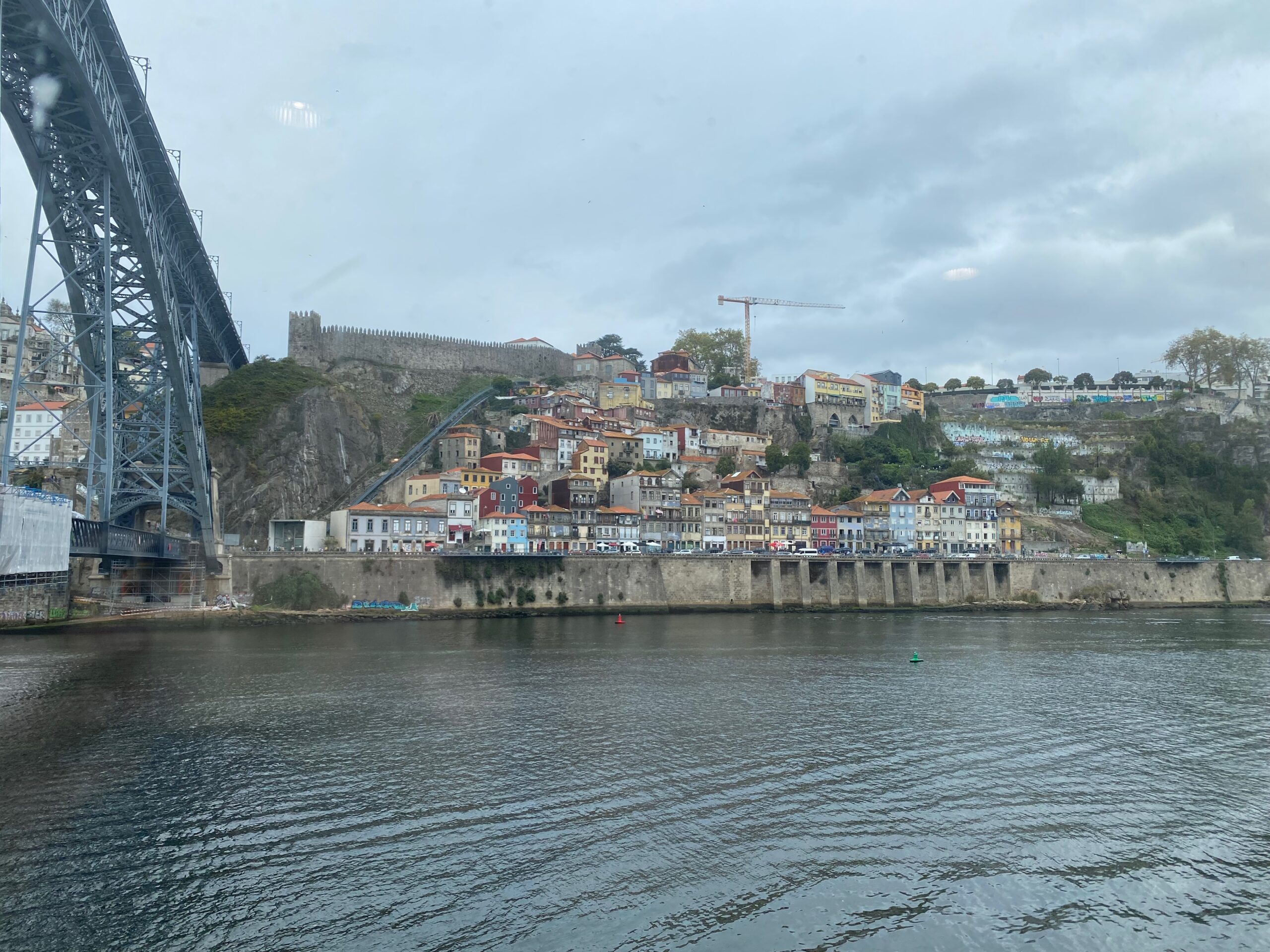

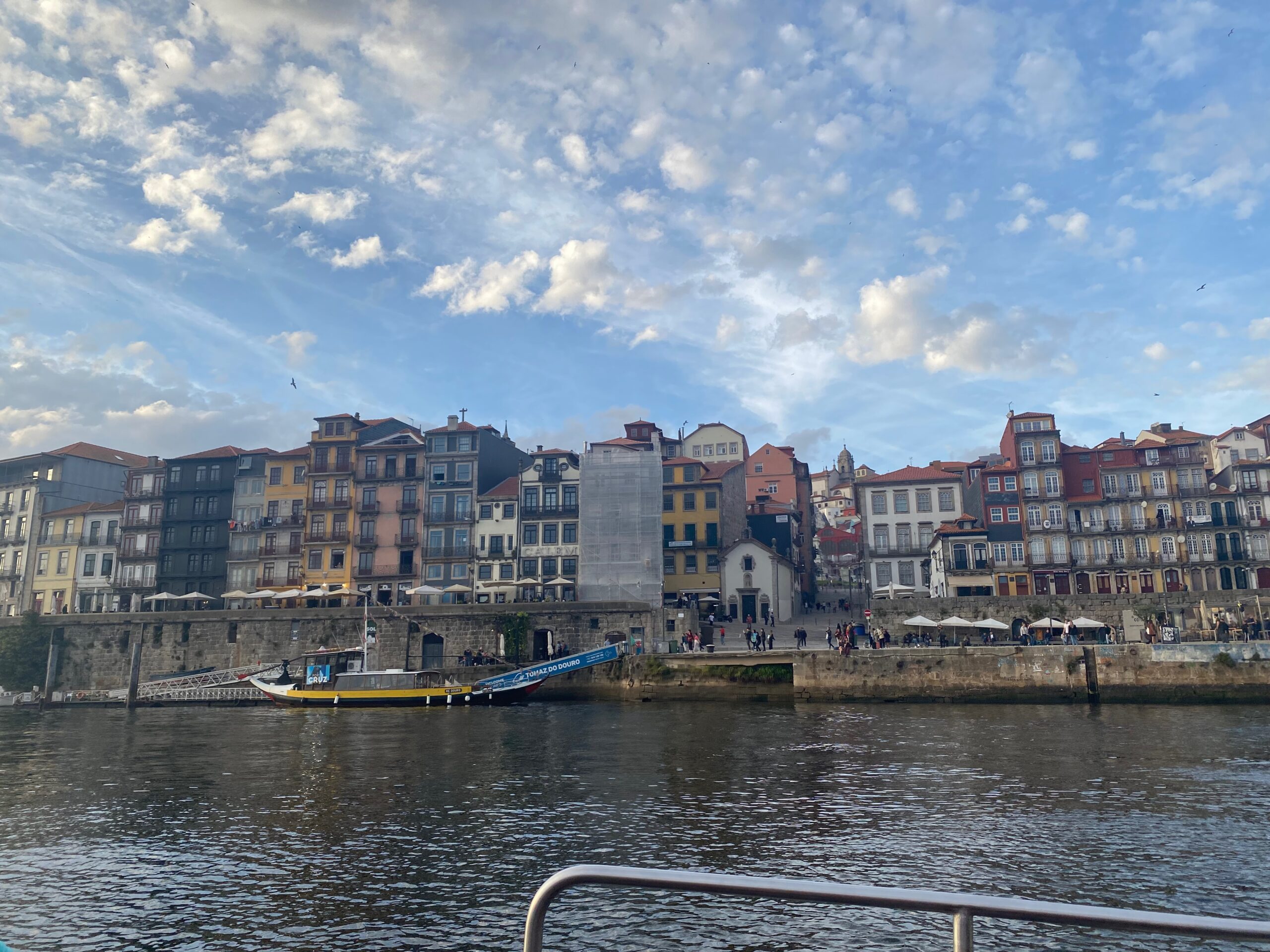
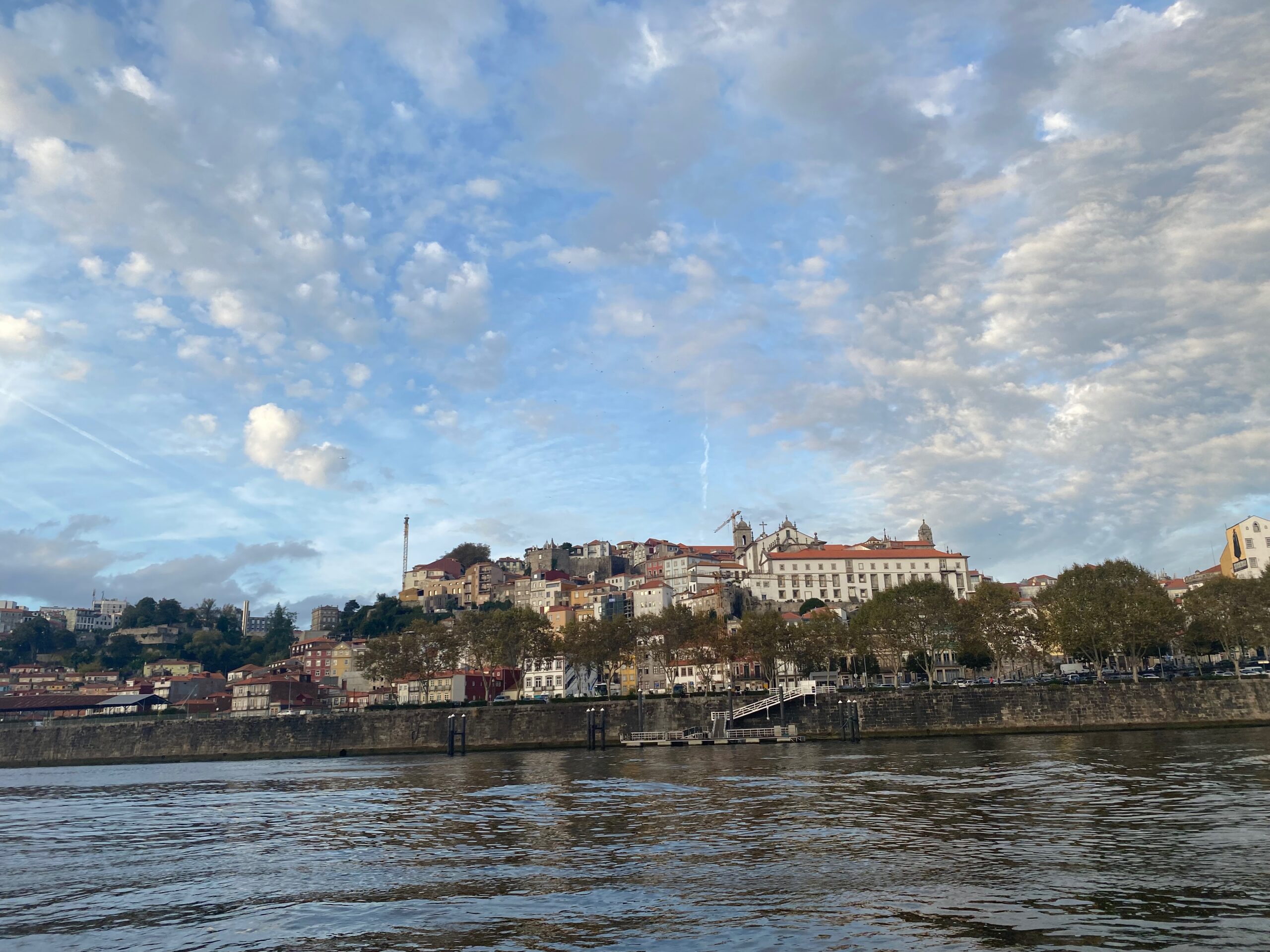
After the boat tour, we started walking towards the restaurant and came across this amazing store called "The Fantastic World of Portuguese Can" which turned out to be a store selling a huge variety of canned goods - primarily sardines, which seems to be a local favorite food.
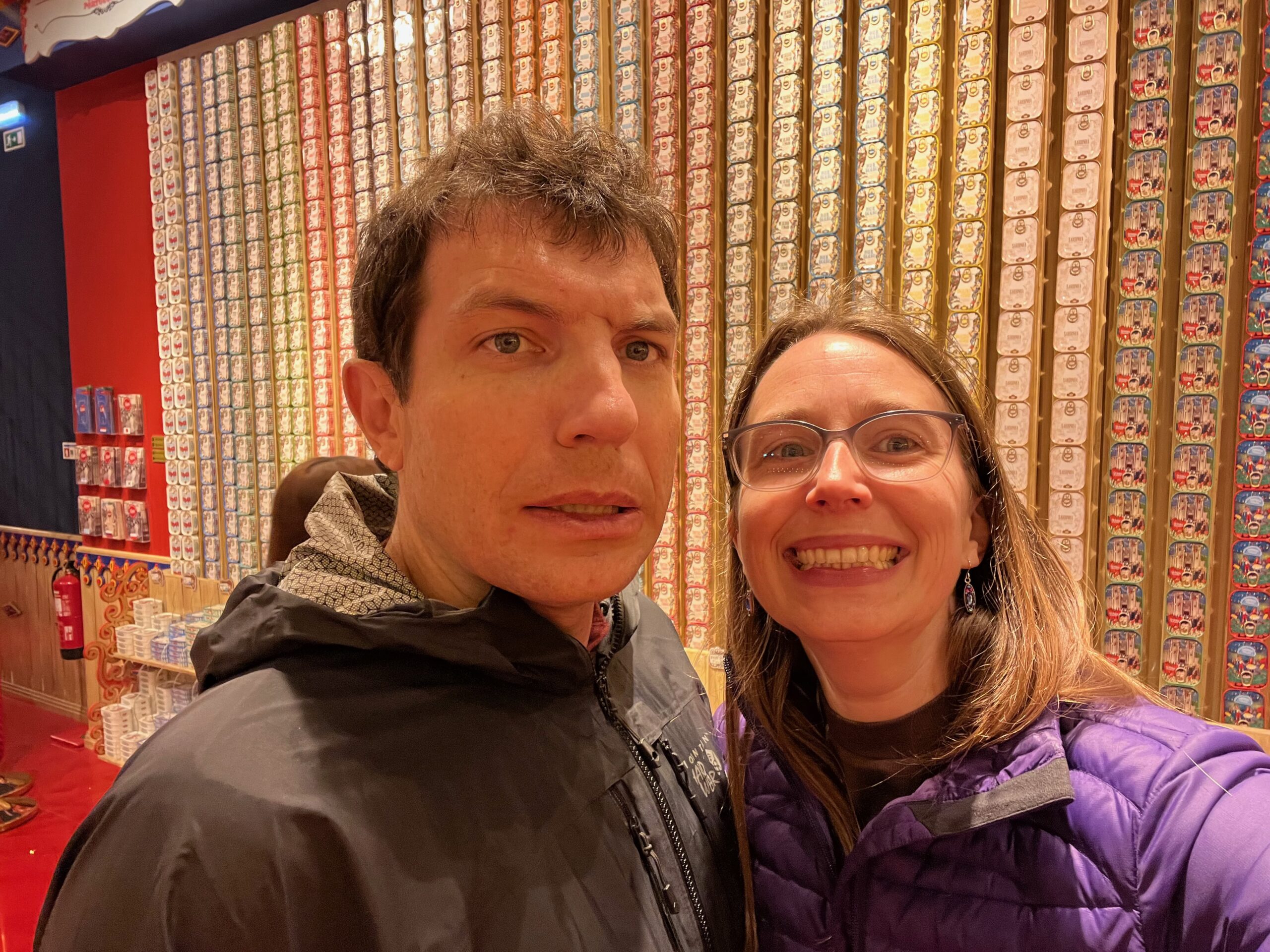
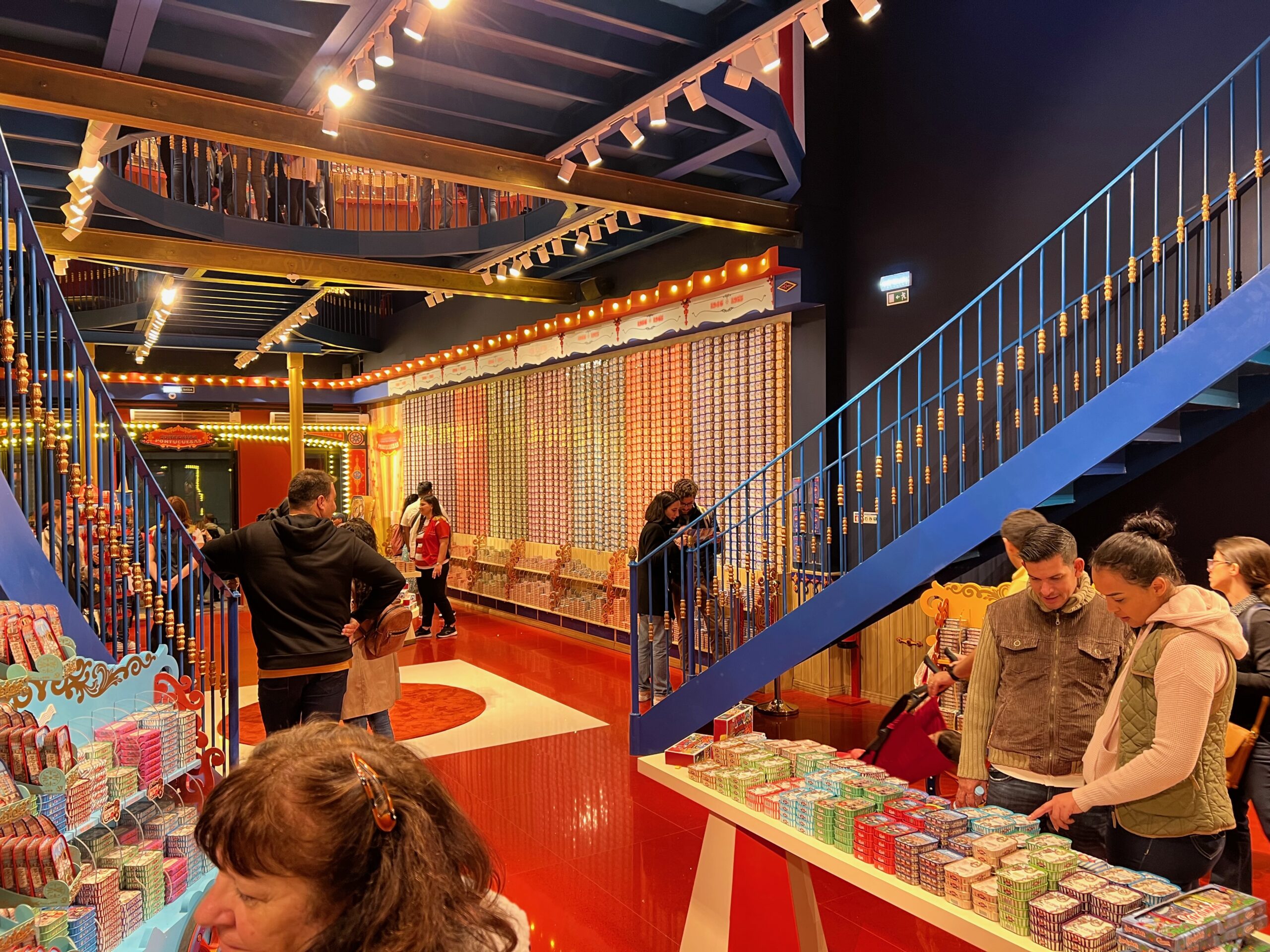

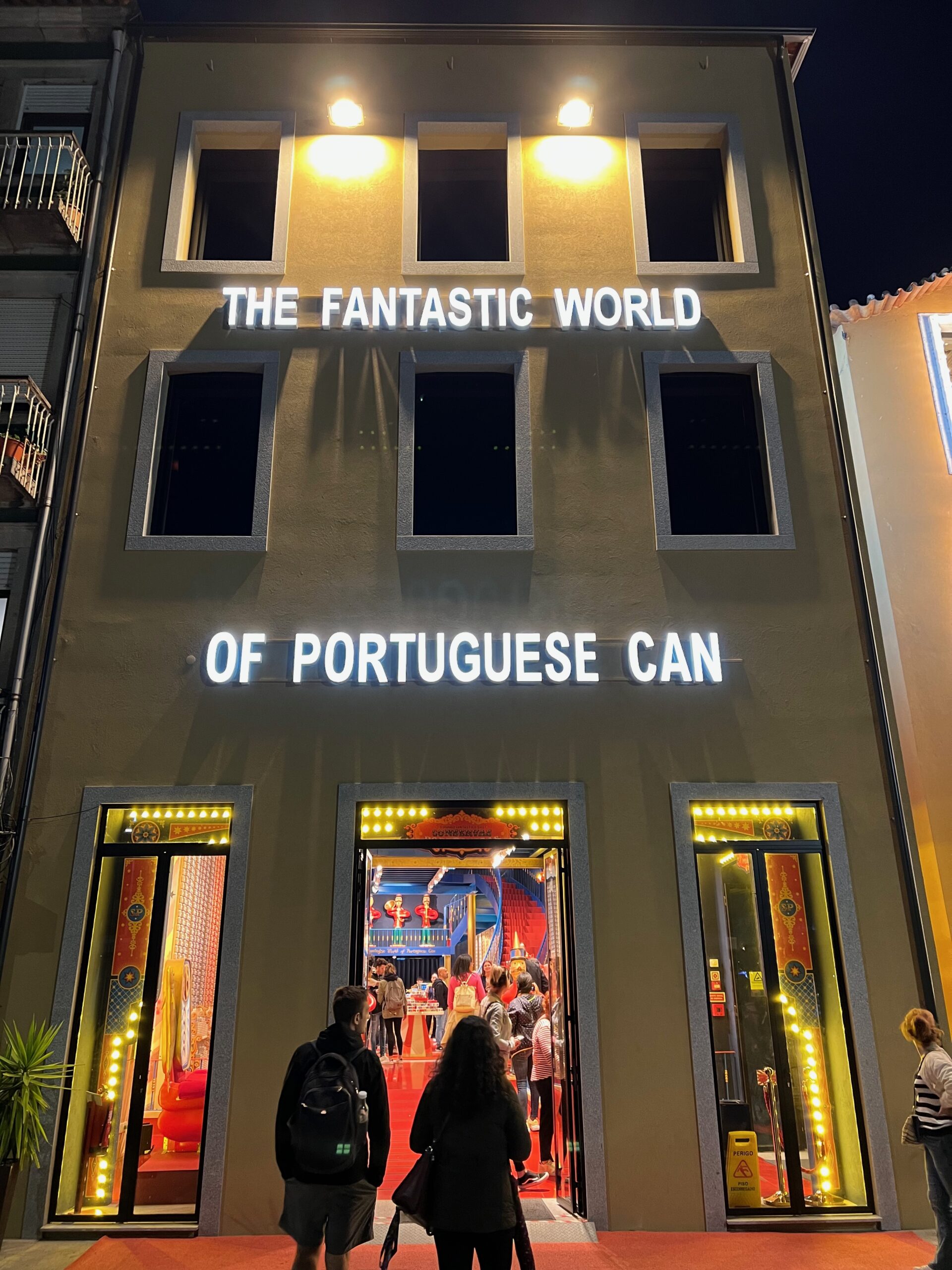
We also stumbled into another port winery and did another tasting just before they were closing. We finally made it to the restaurant which had a lovely small and intimate setting where we were serenaded by two fadistas and two fantastic guitarists.
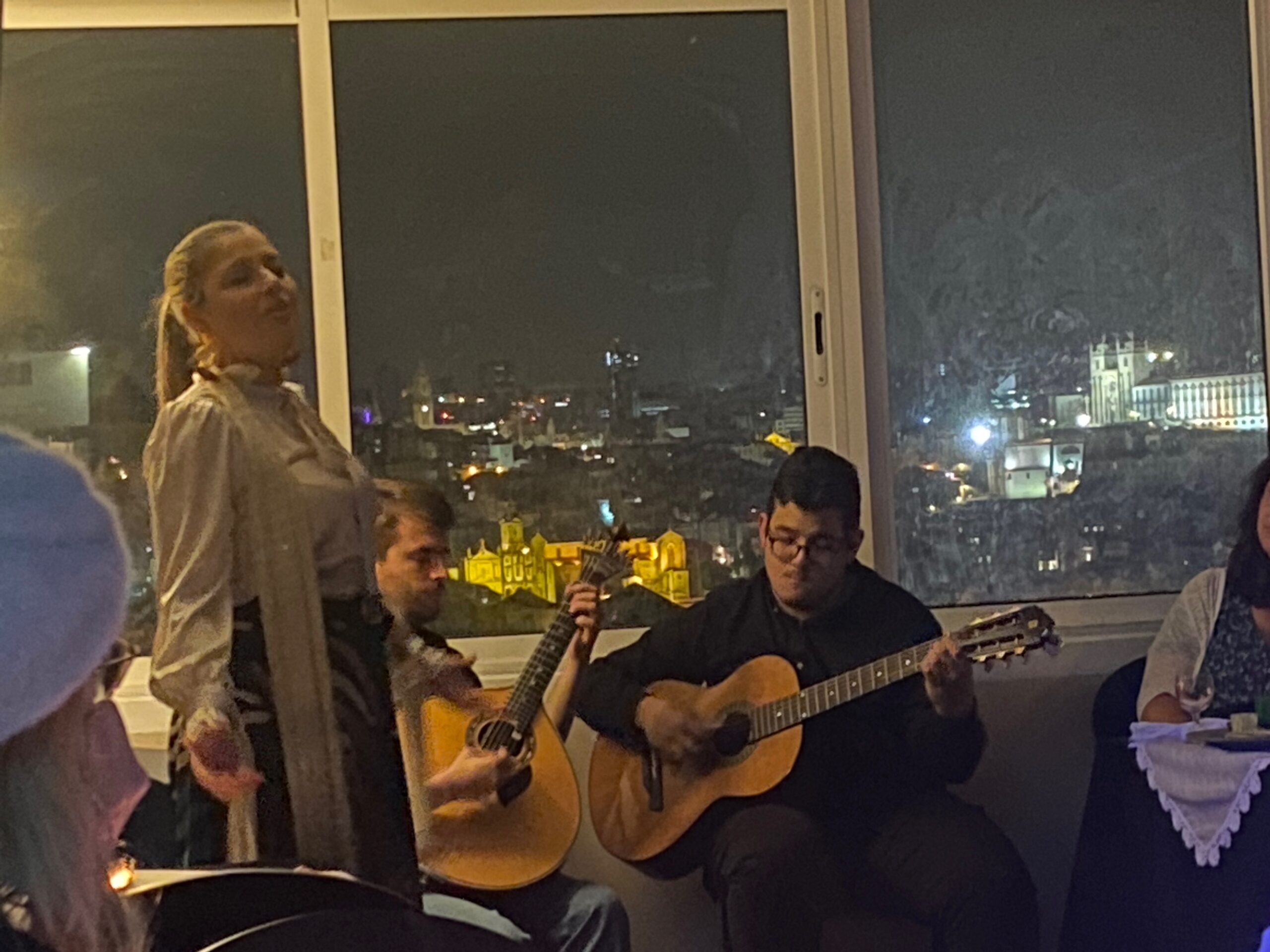
The next morning, we had another slow start and decided to walk to a few landmarks that we had not visited on our tour, including the Capela das Almas - another church with blue tiles. Unfortunately, the monastery just across the Louis bridge was not open for visitors, but it did provide an amazing view back over the river to Porto.
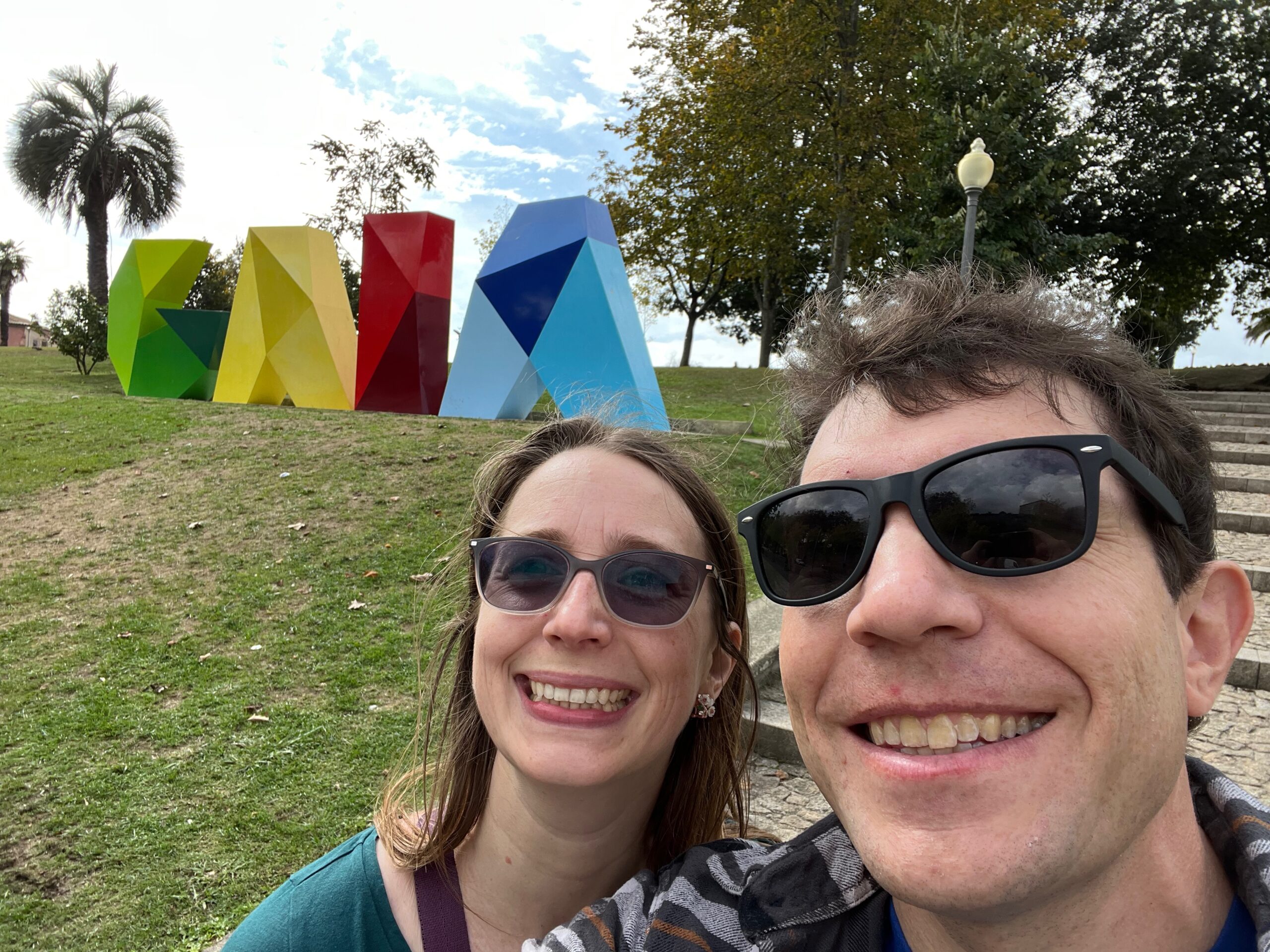
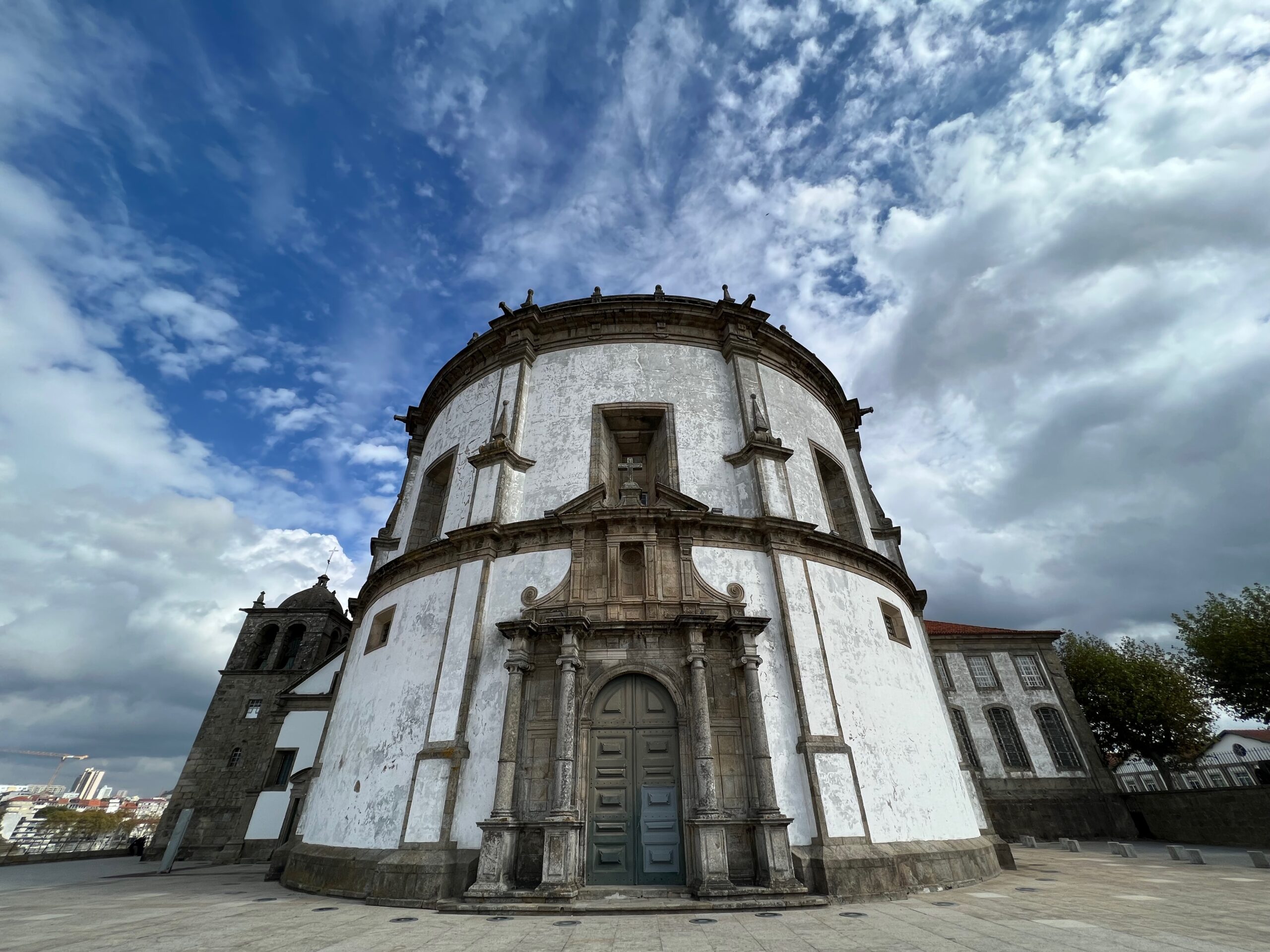
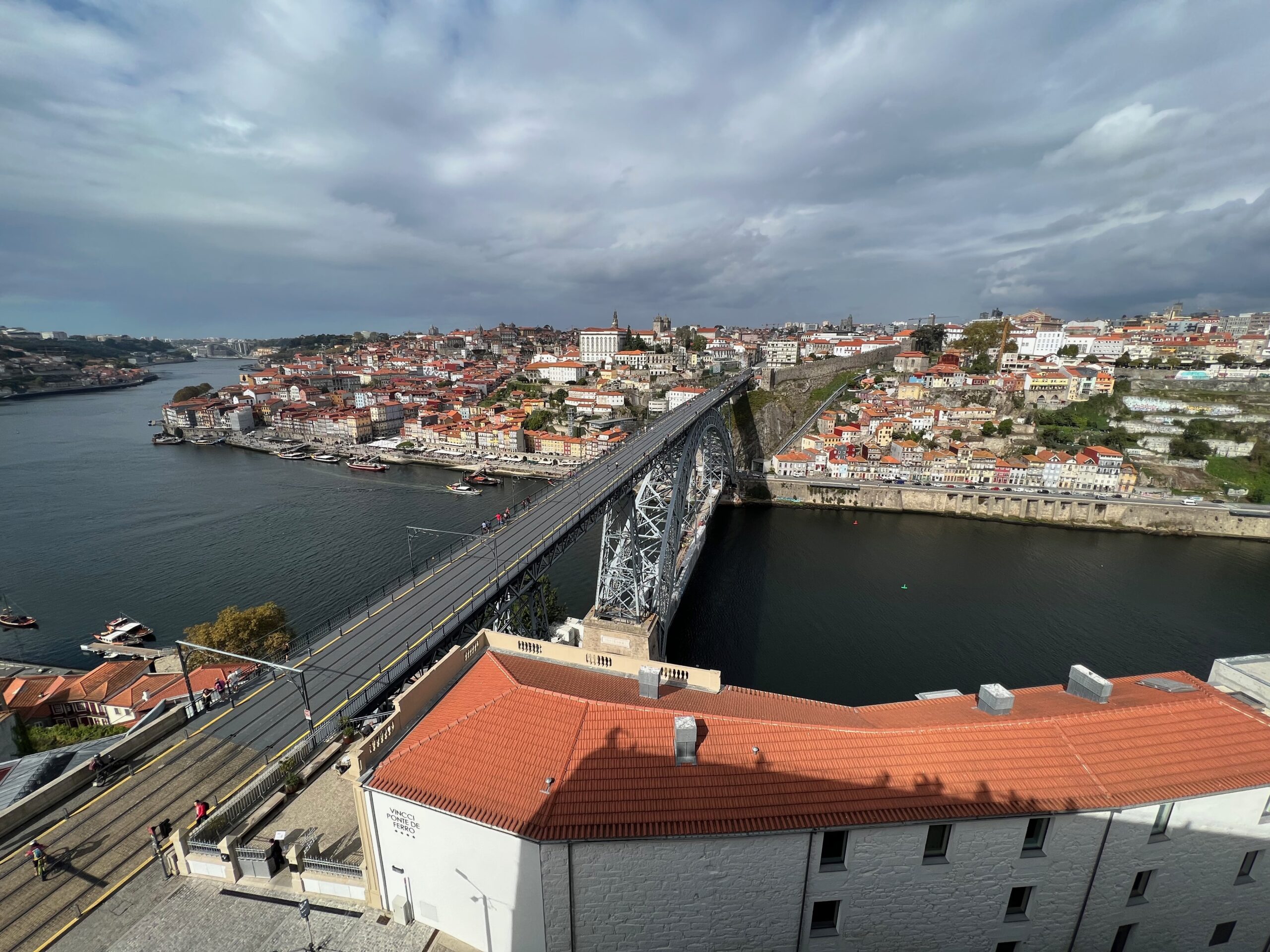
After a long walk, we picked up our rental car and headed east out of town for a couple of days in the Duoro Valley.
